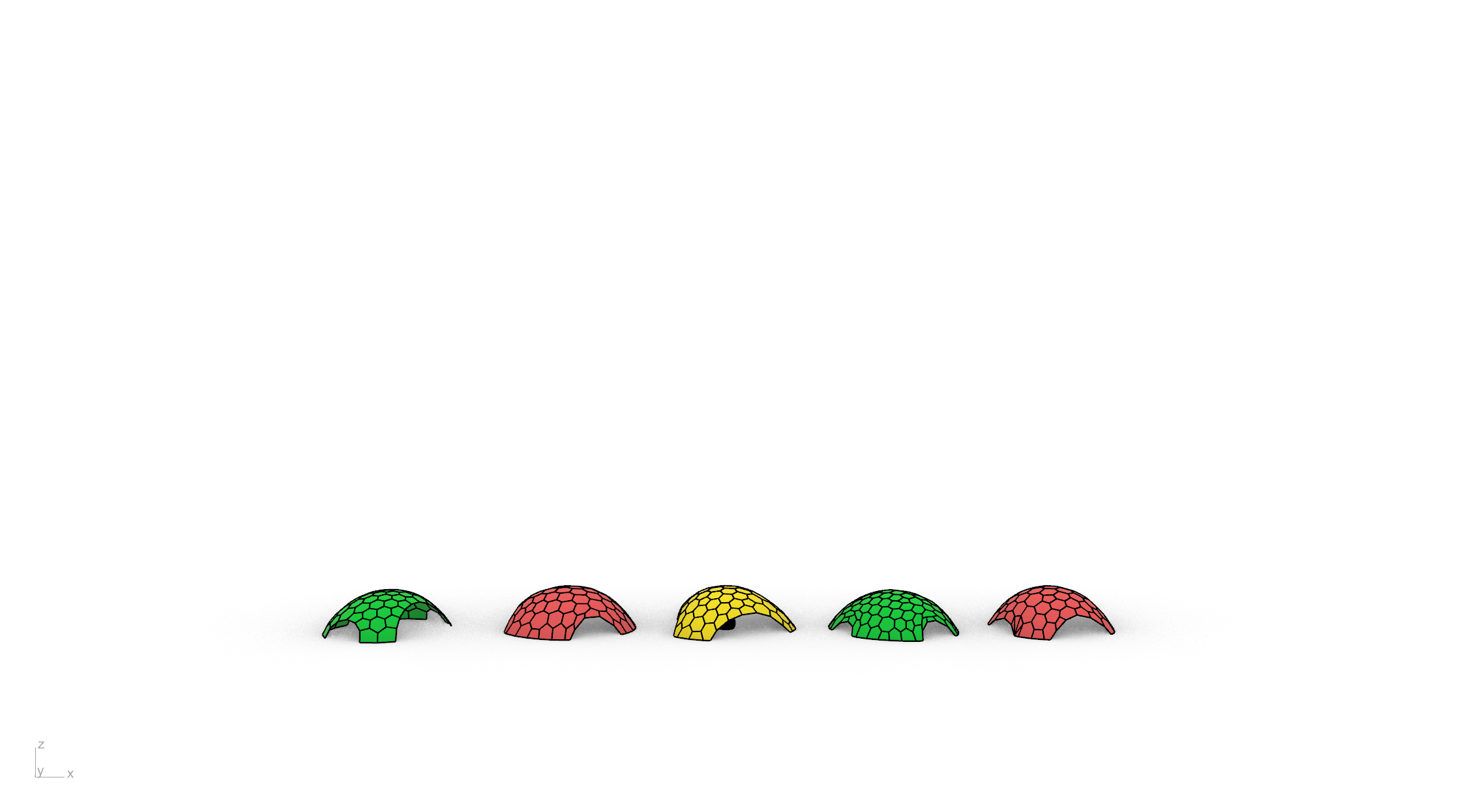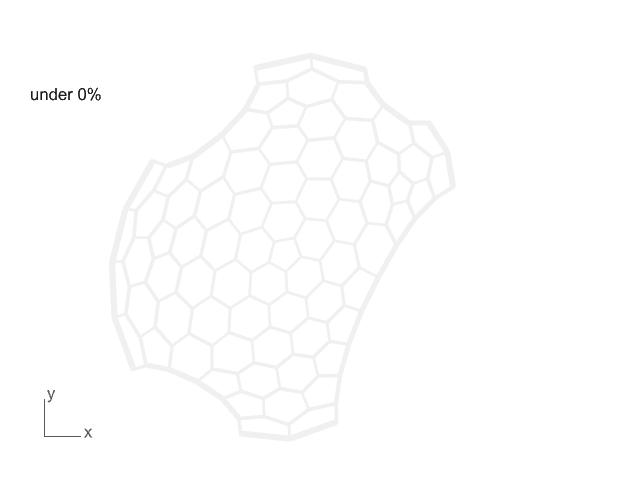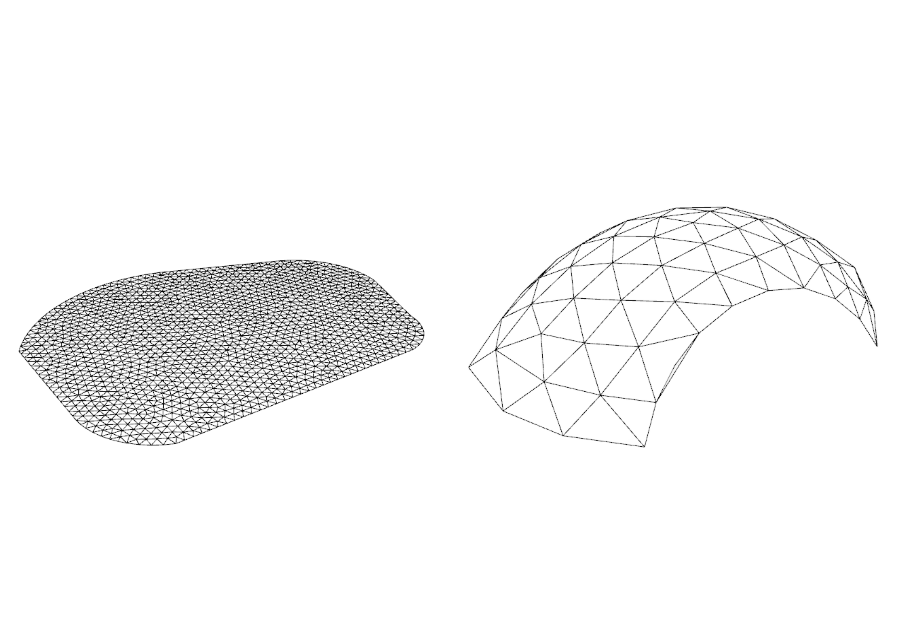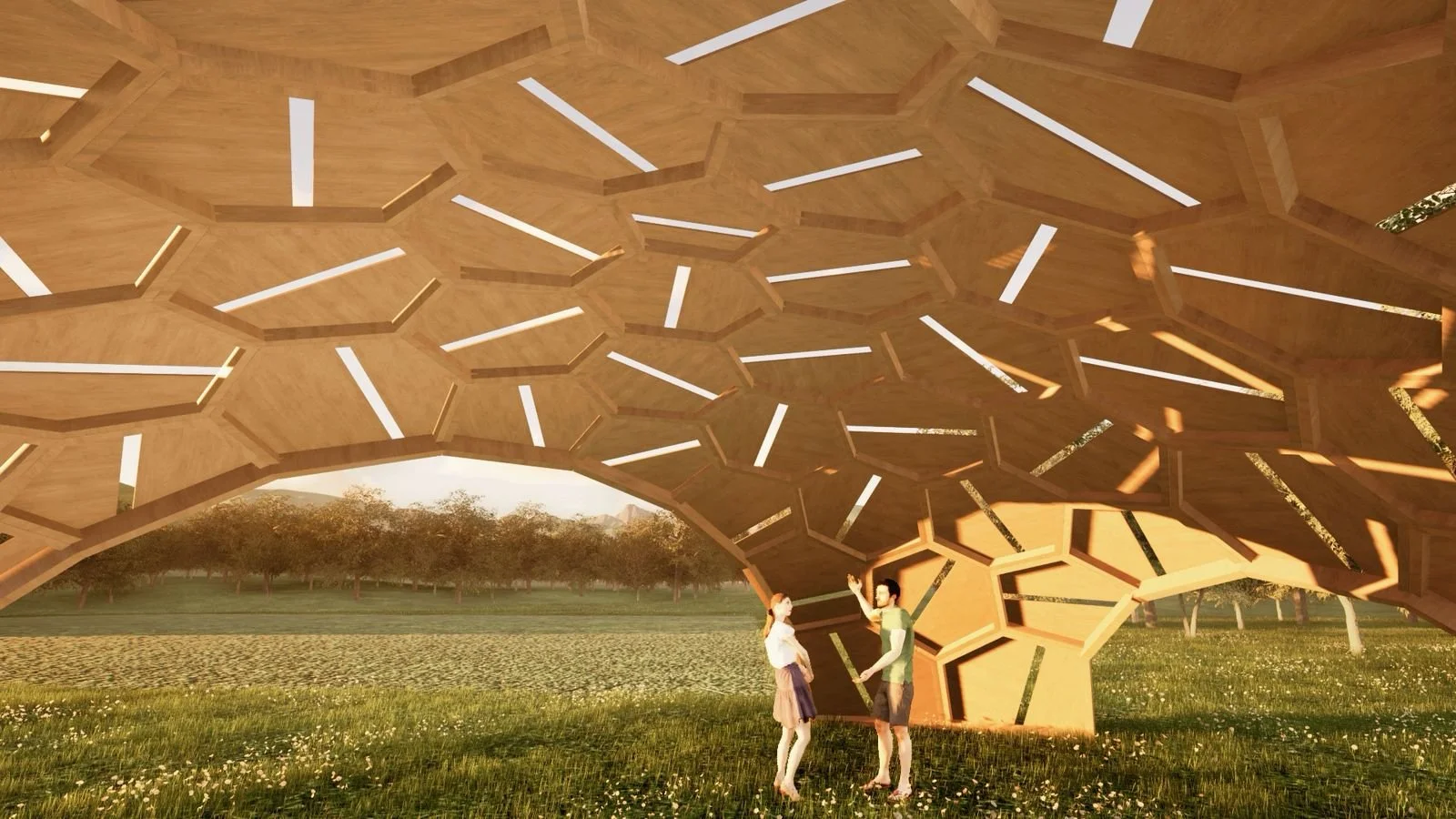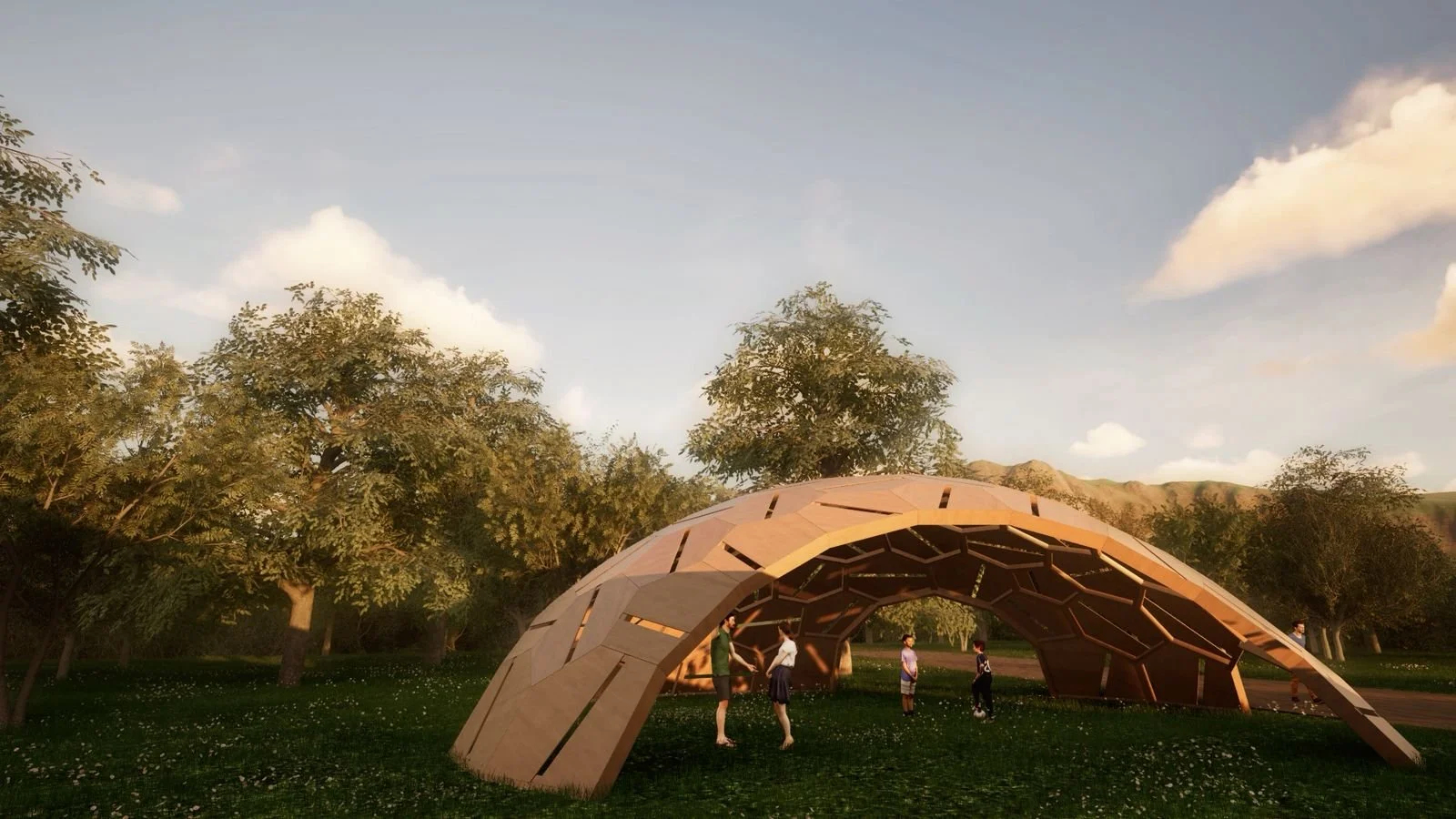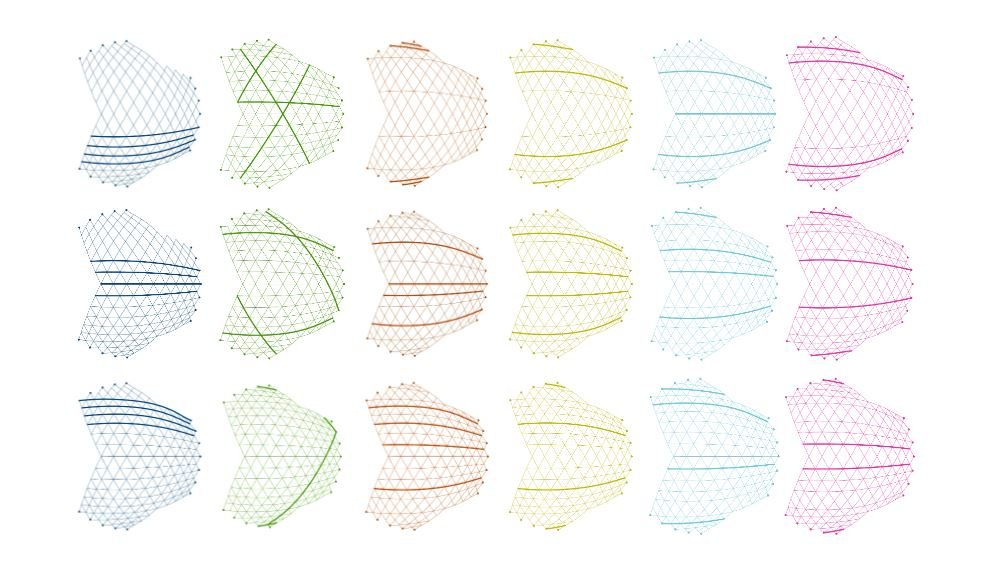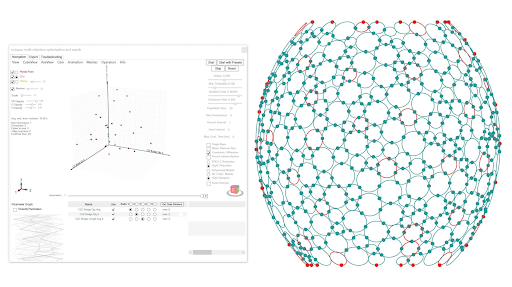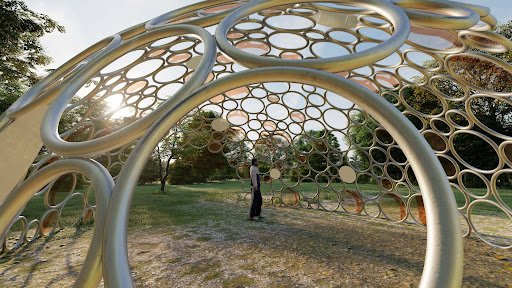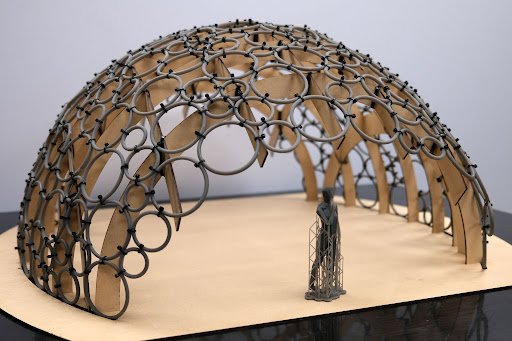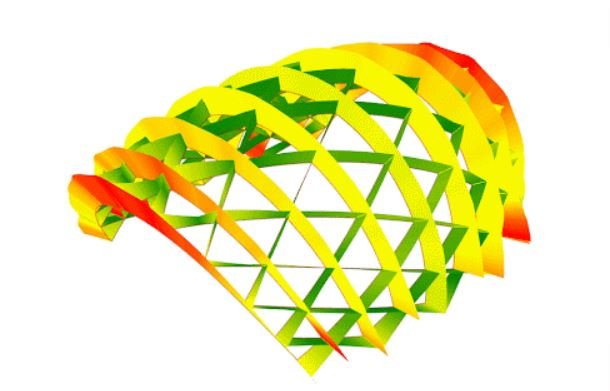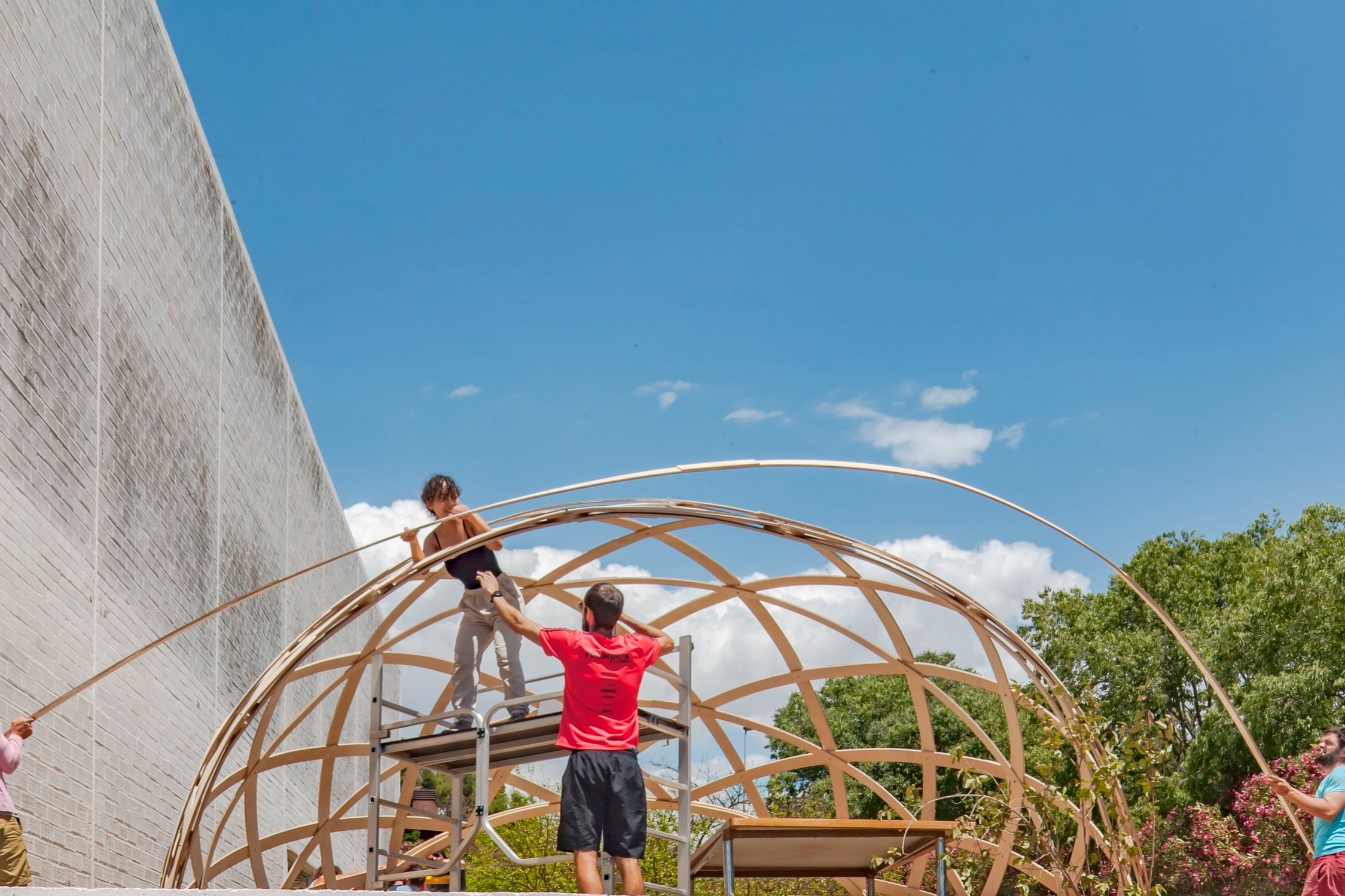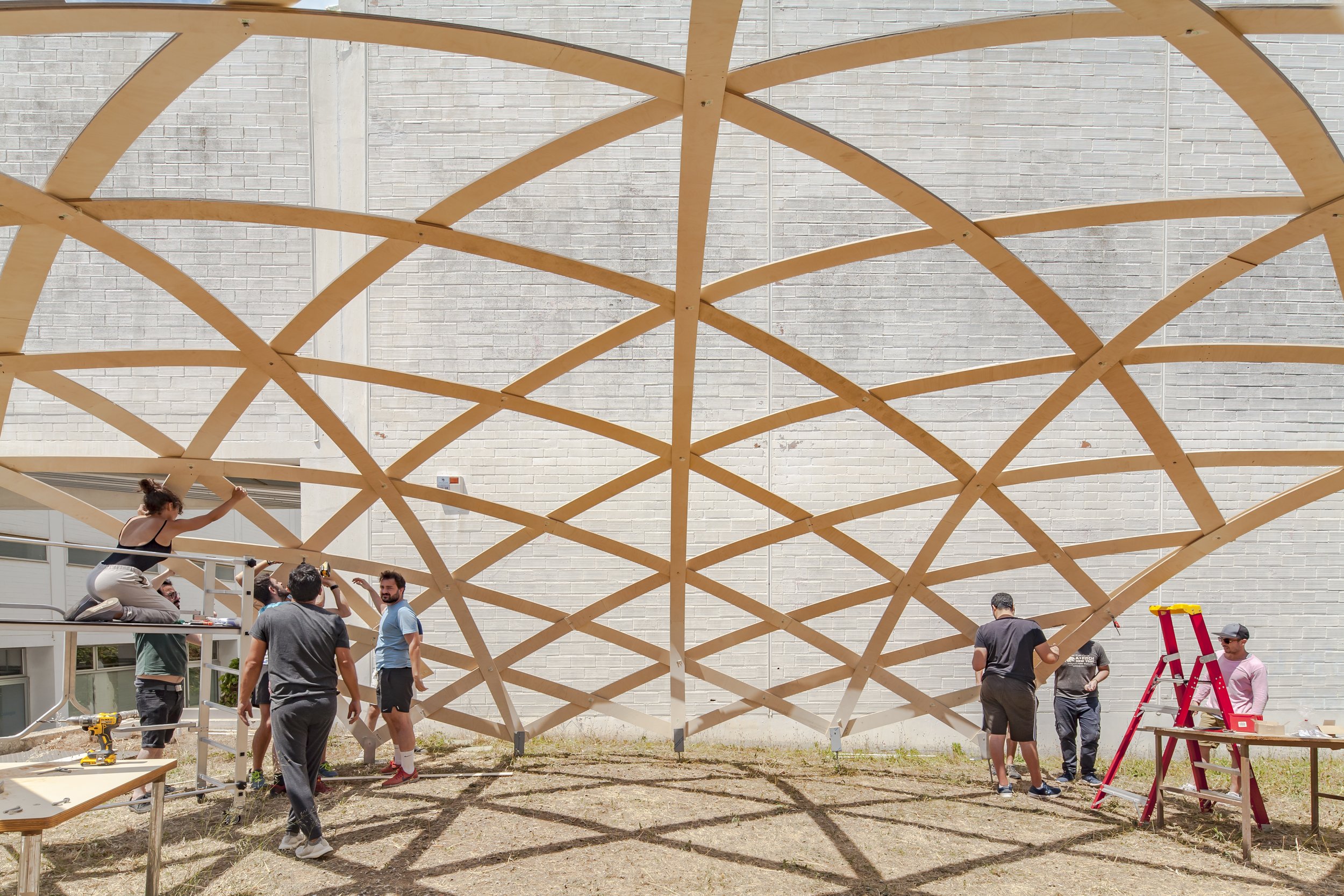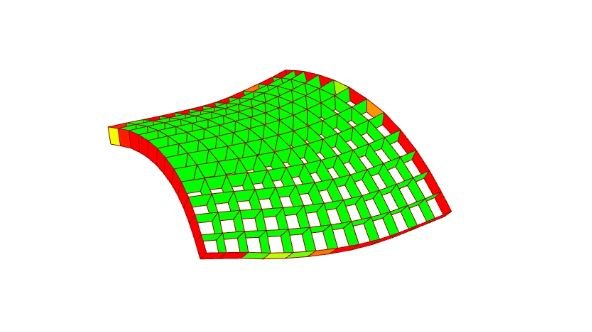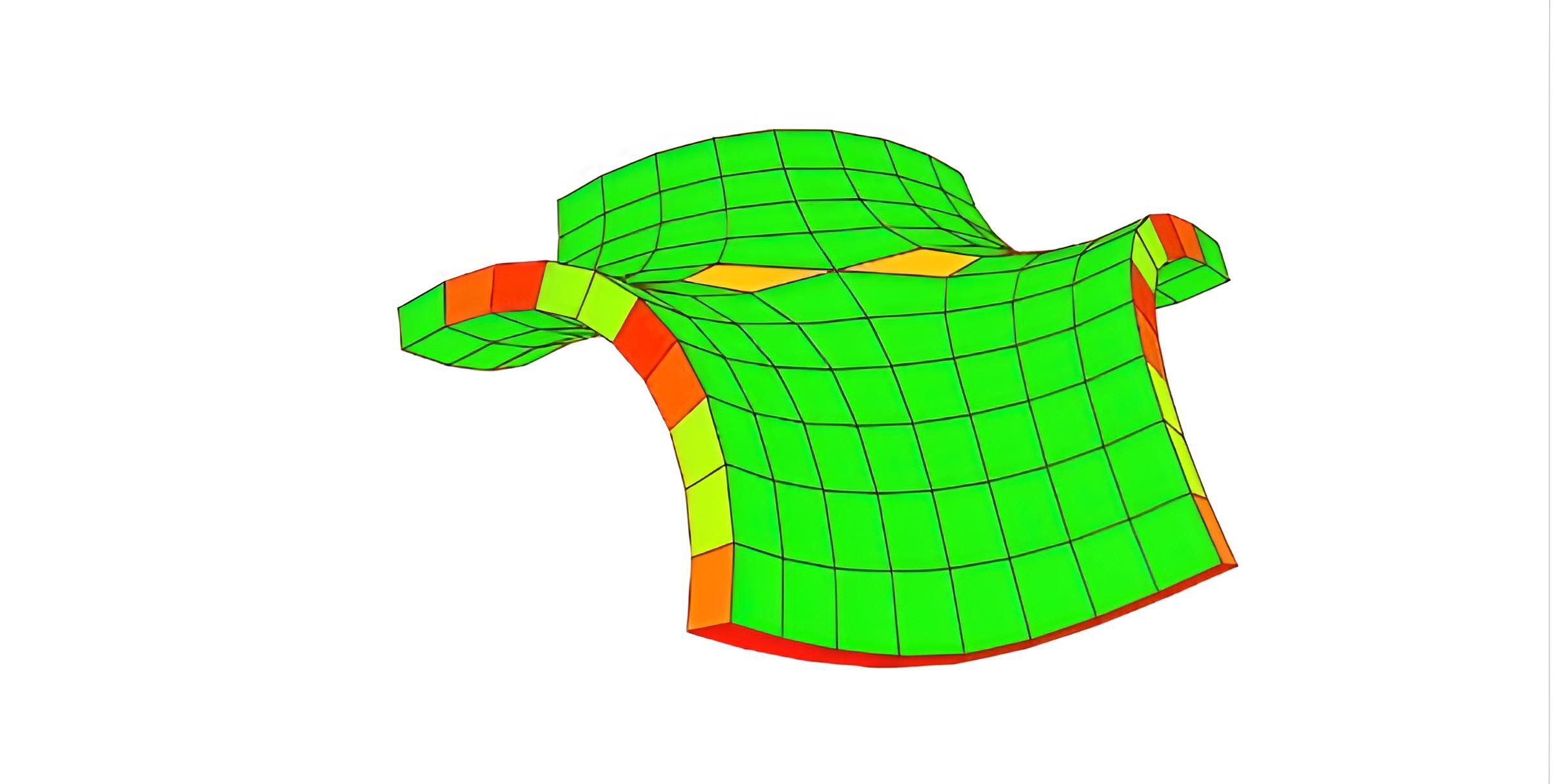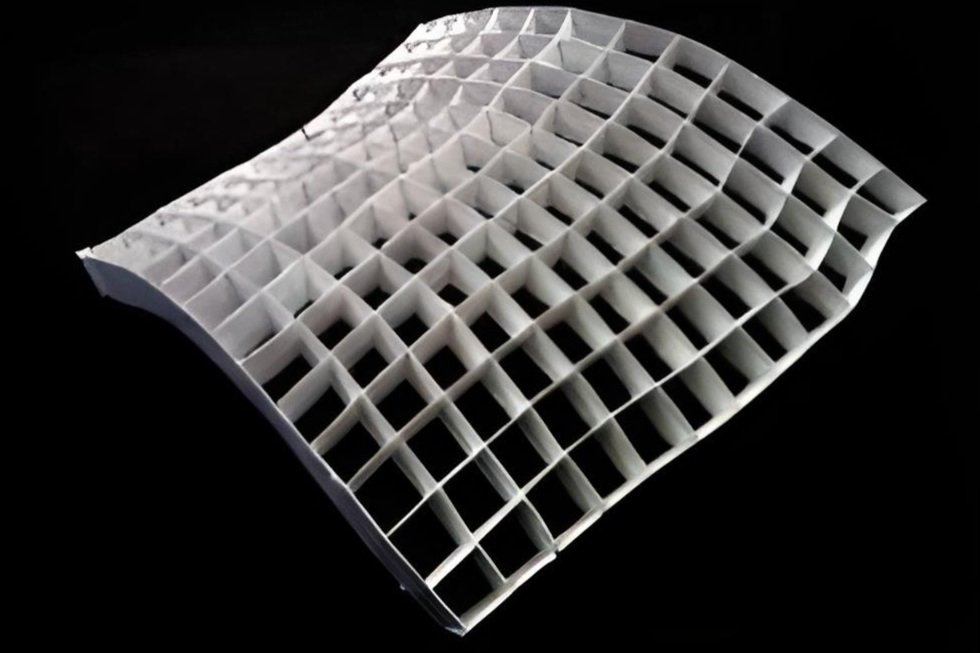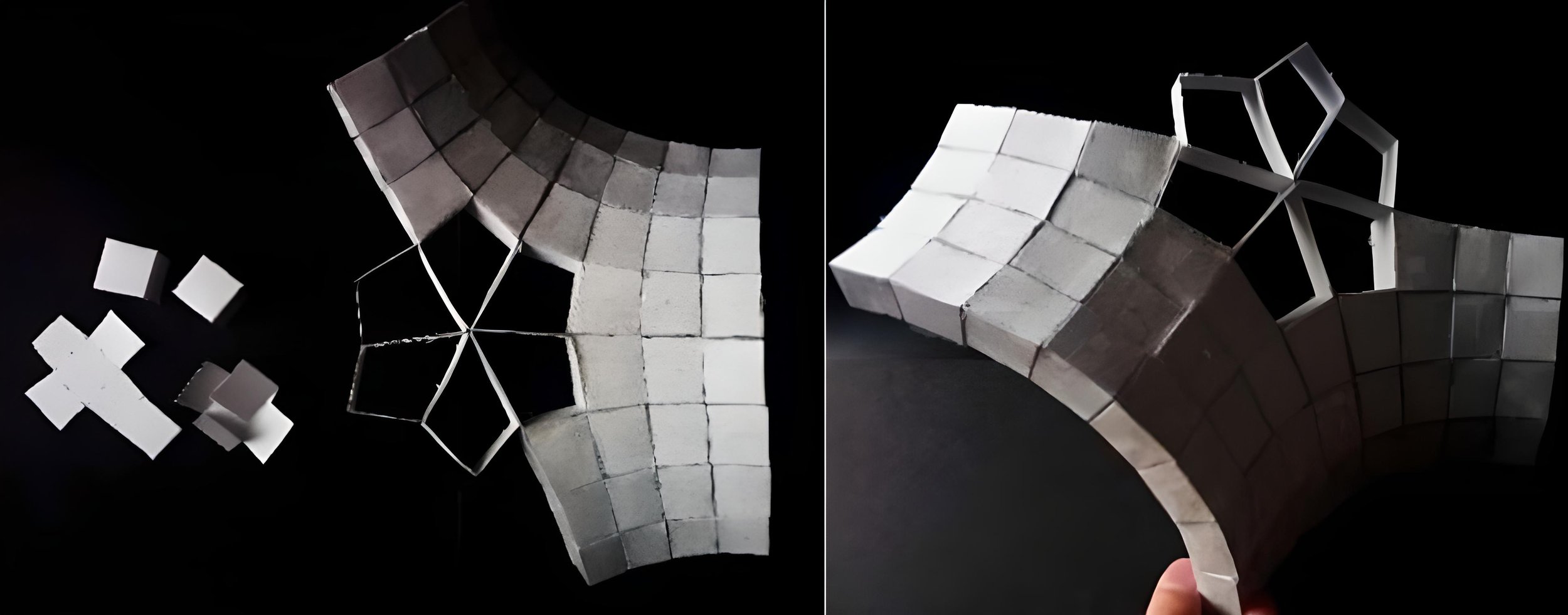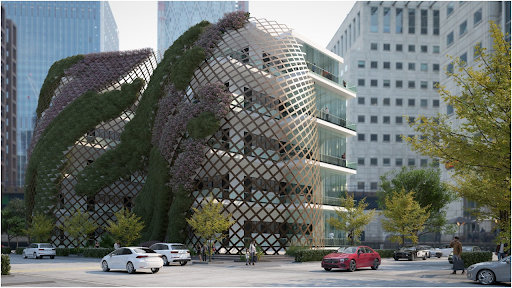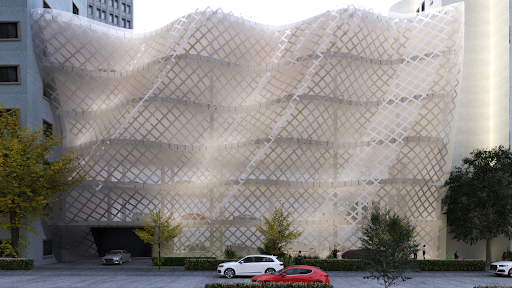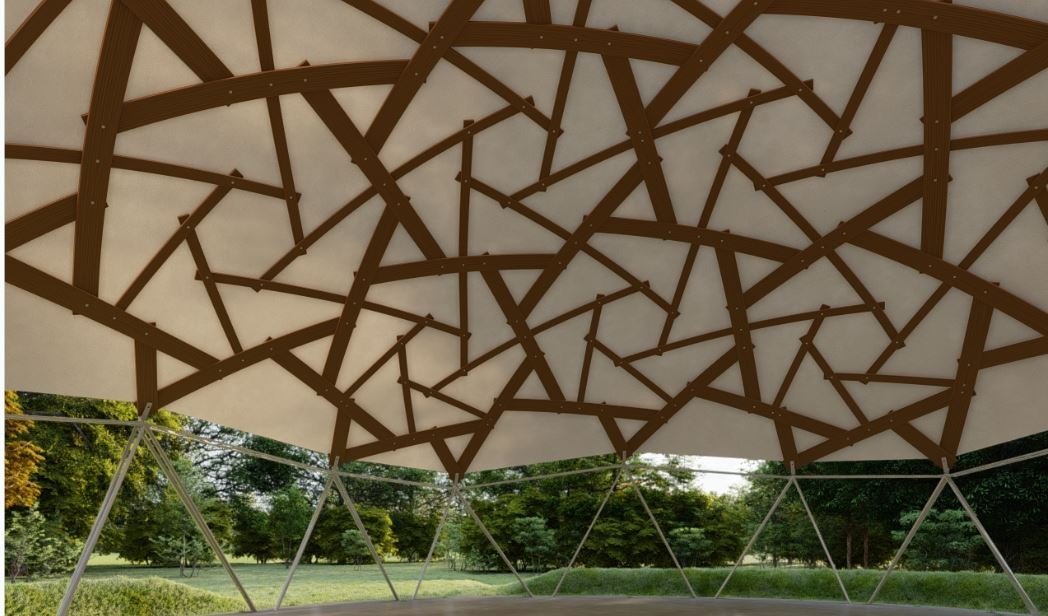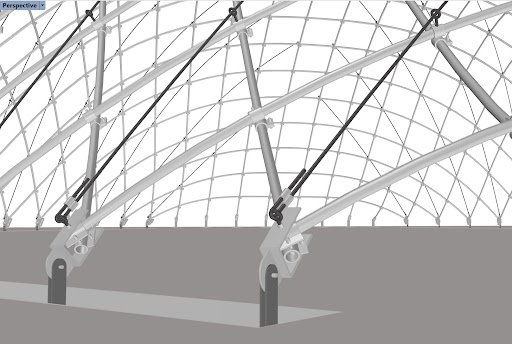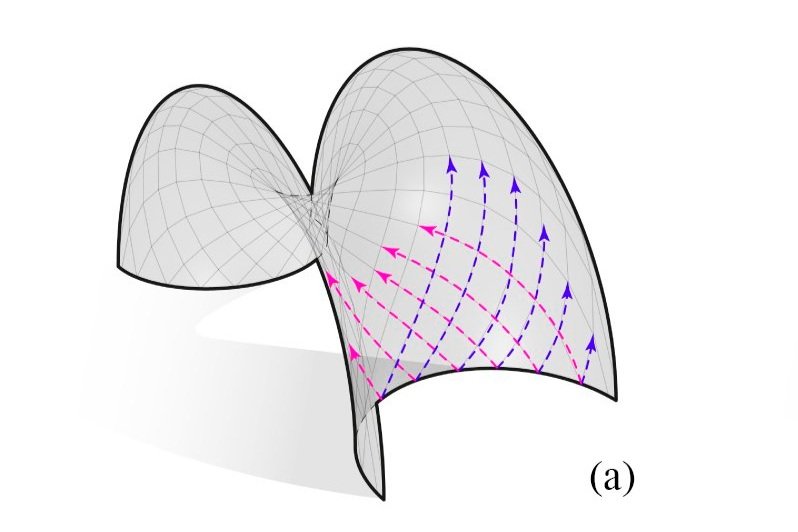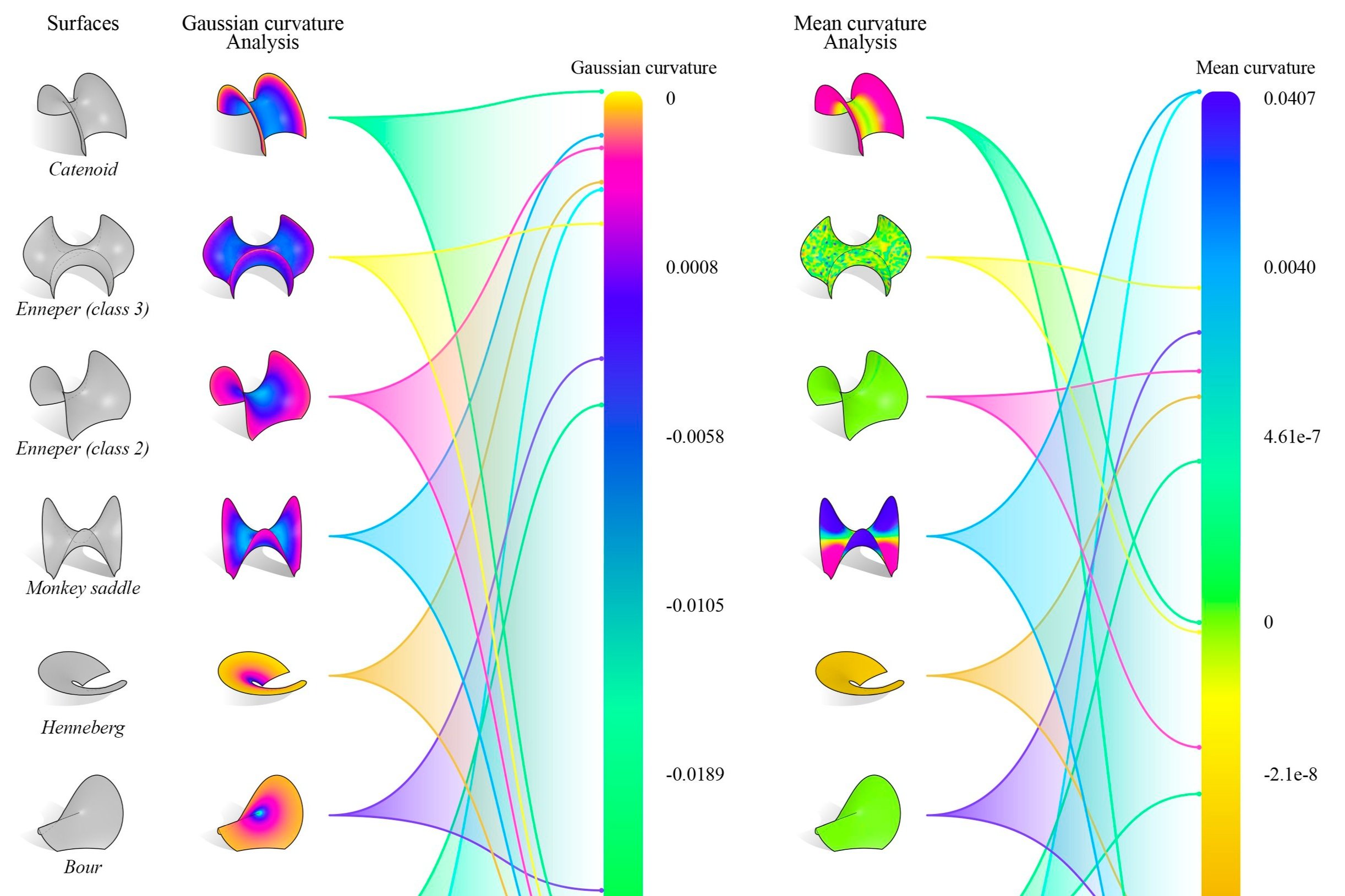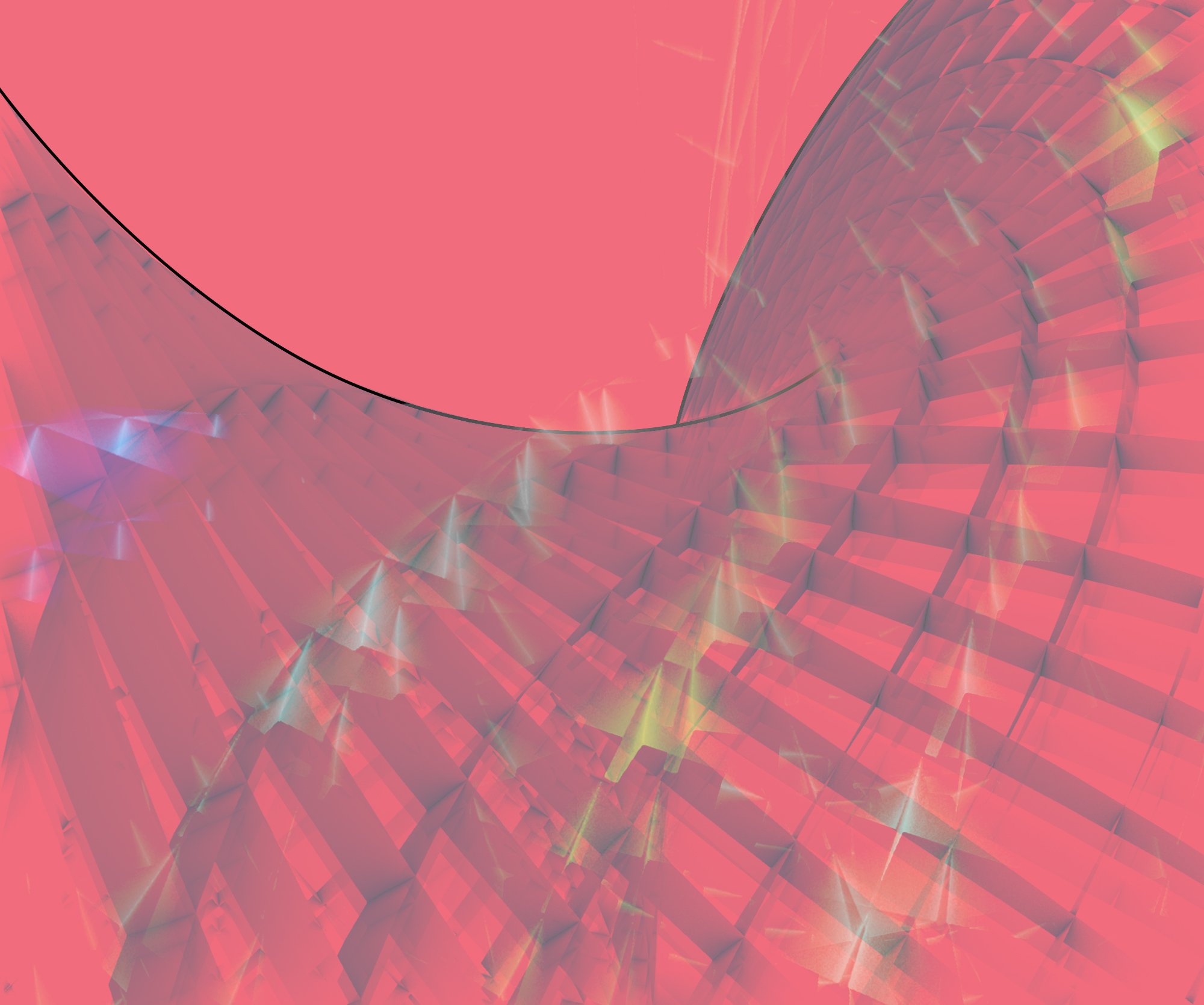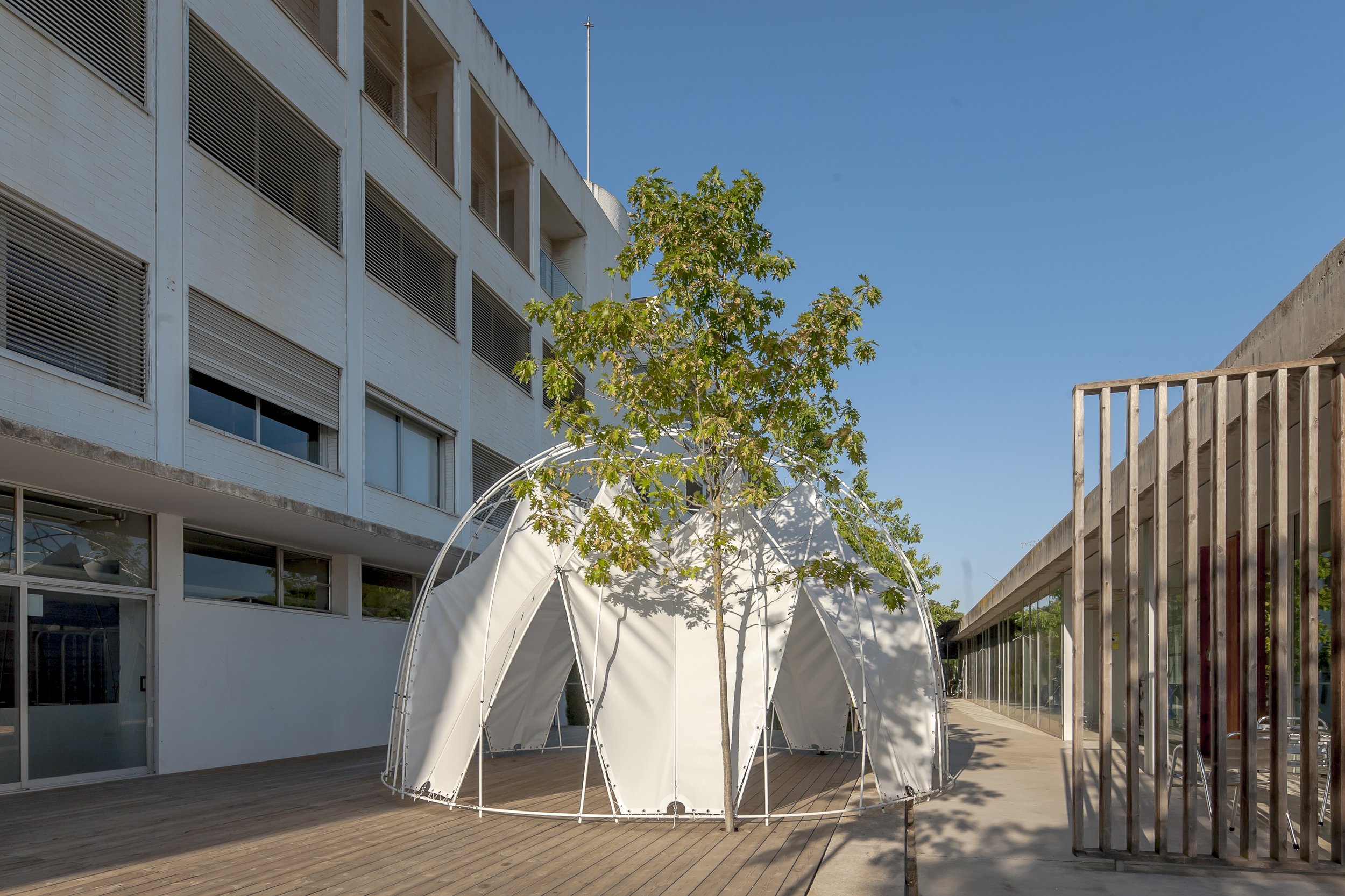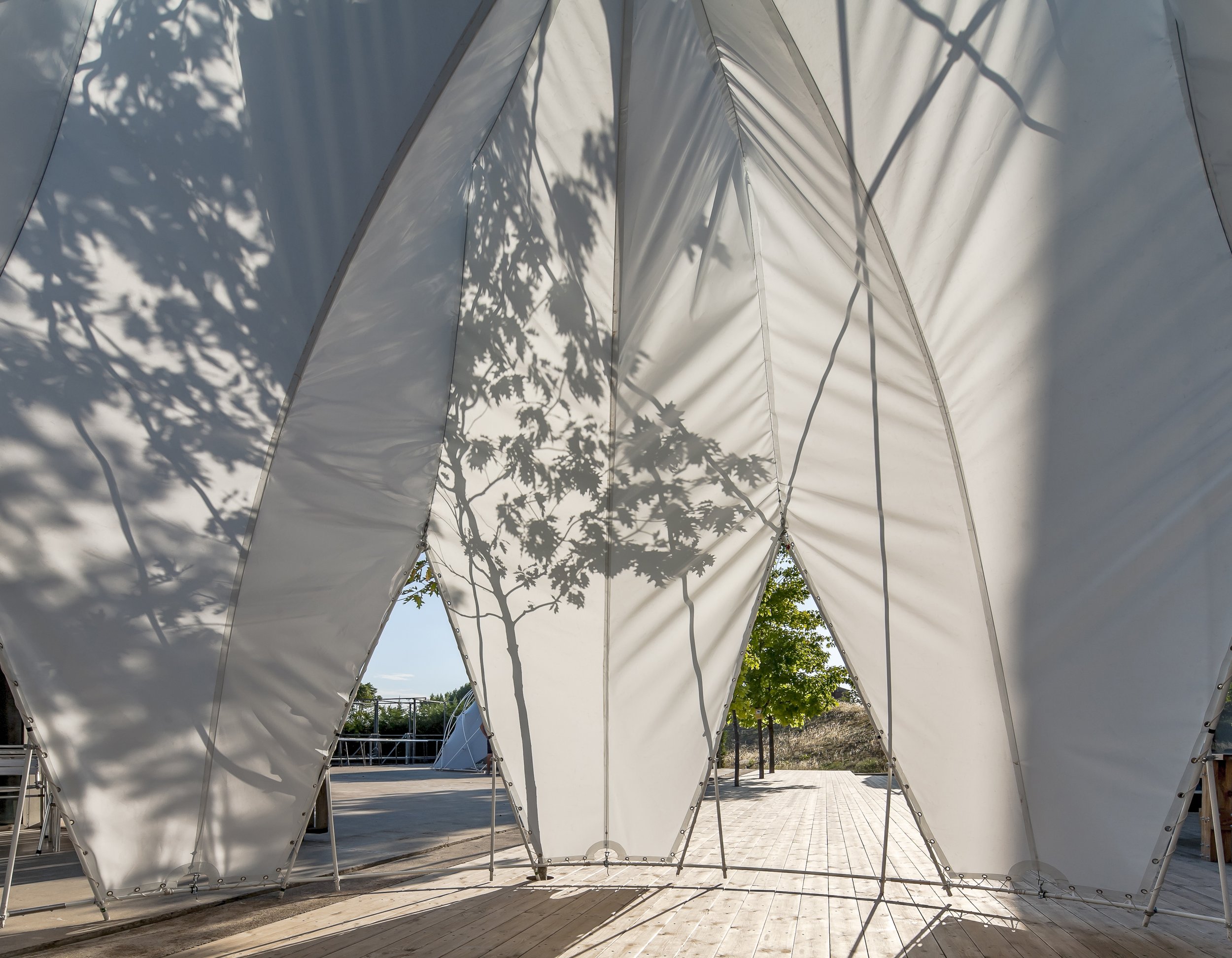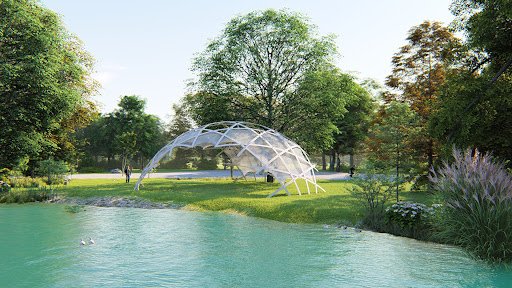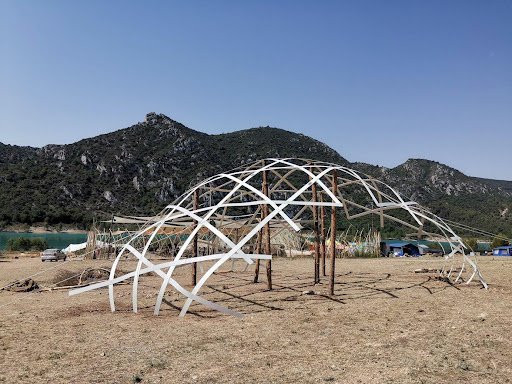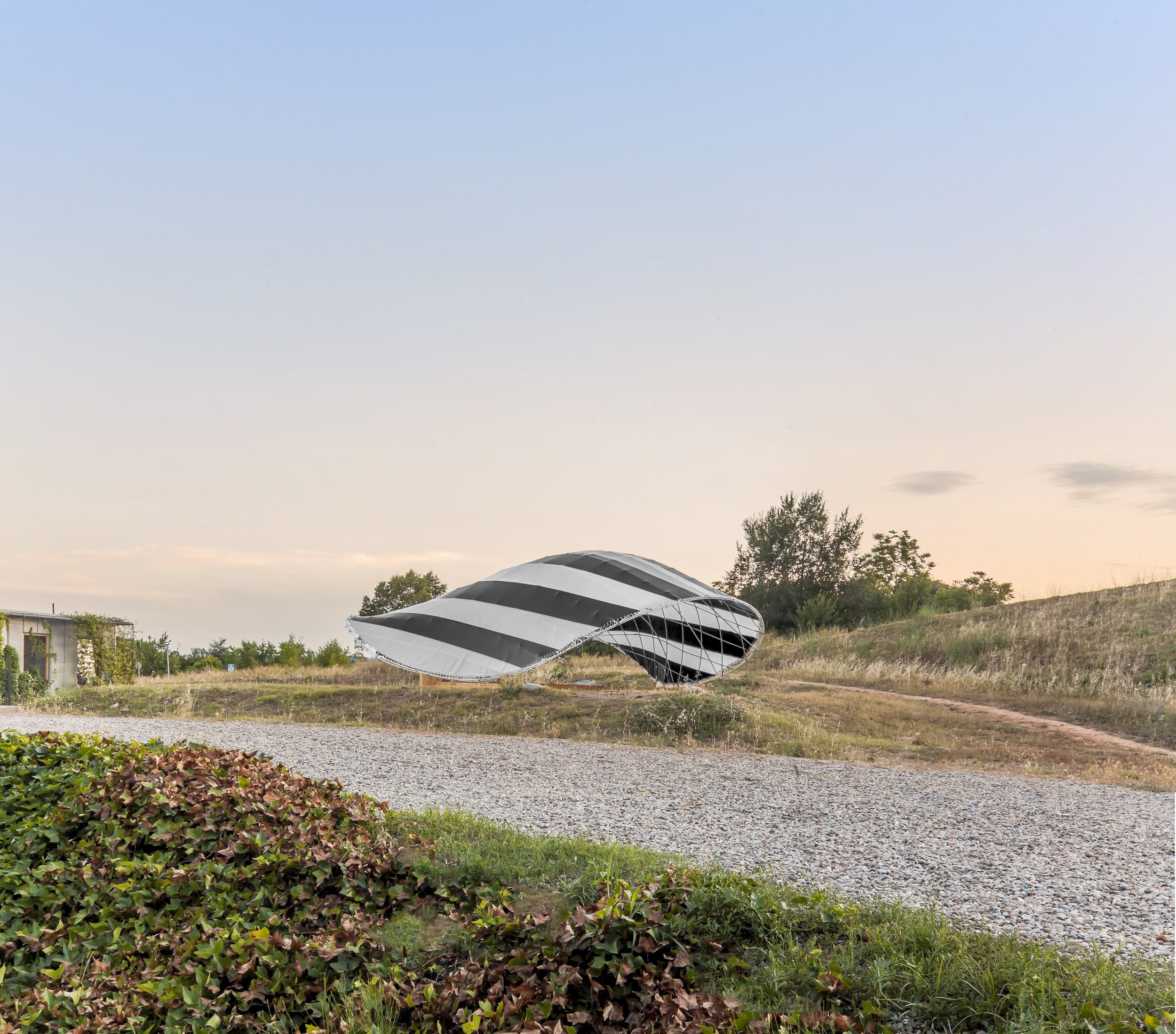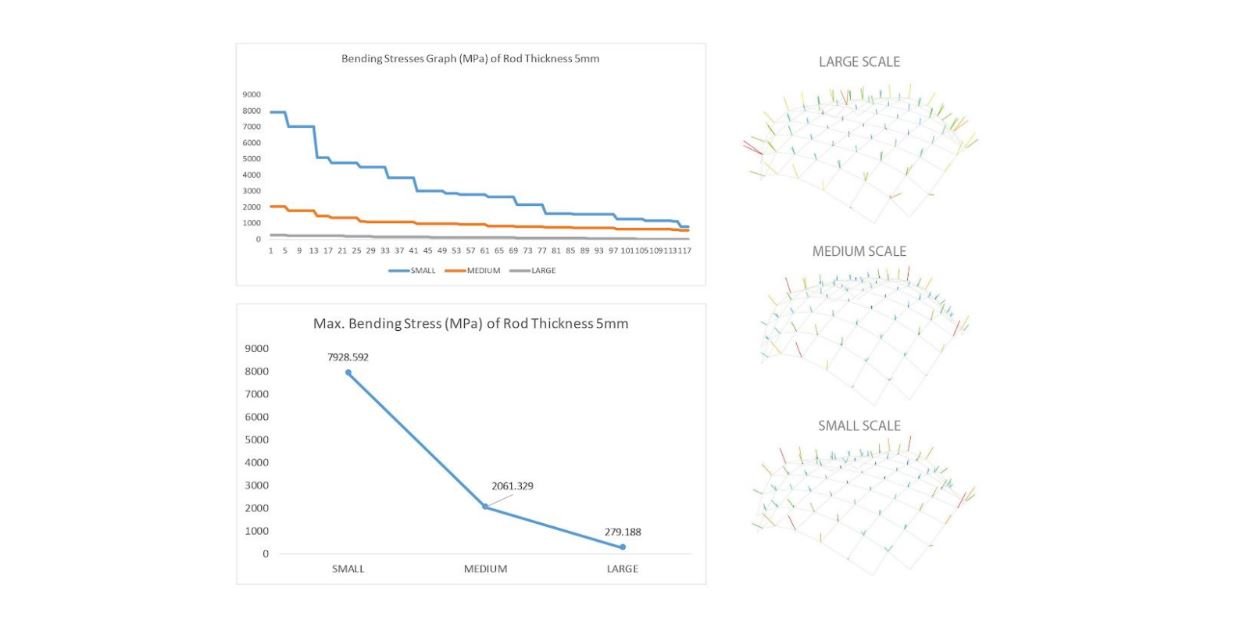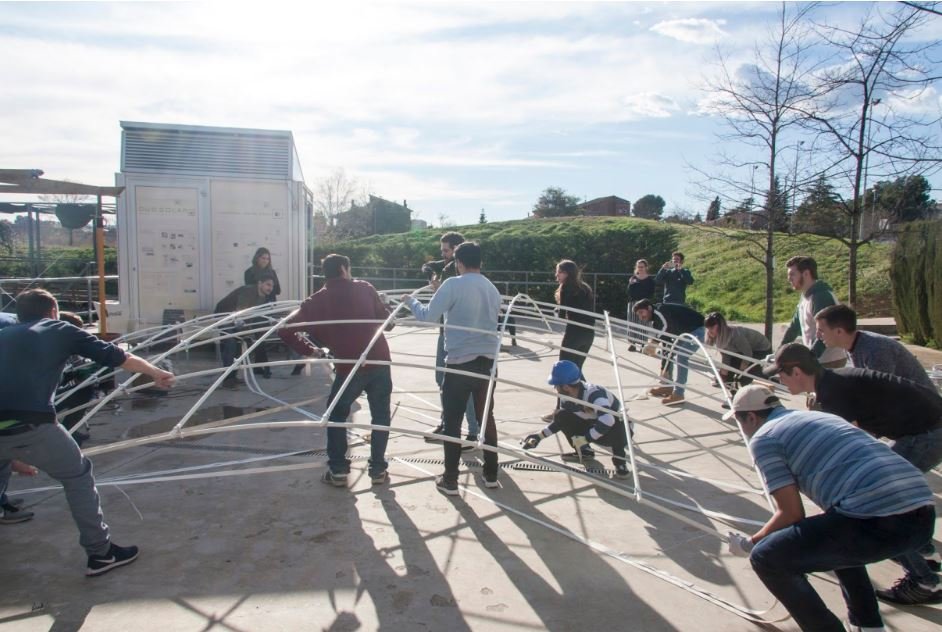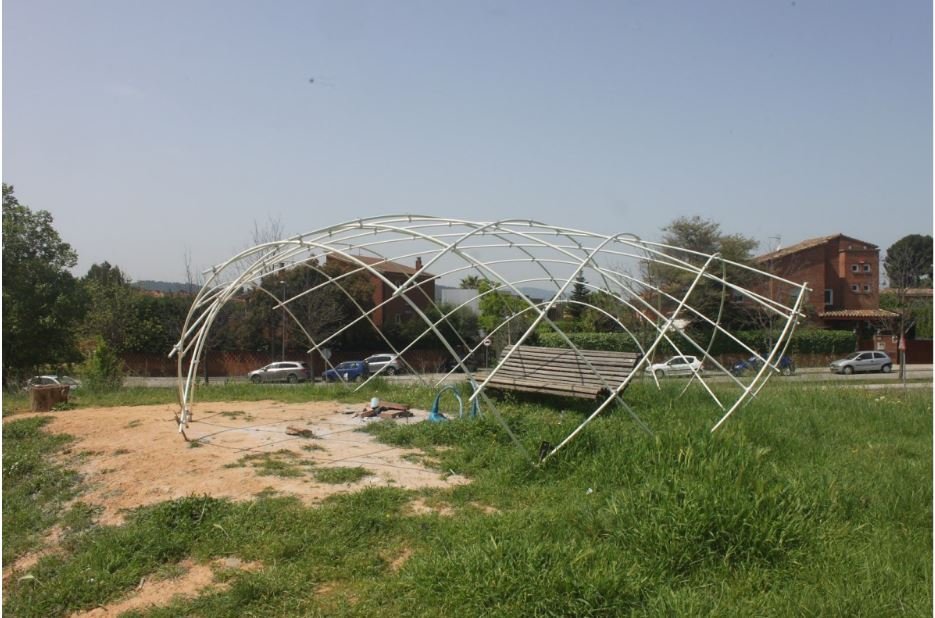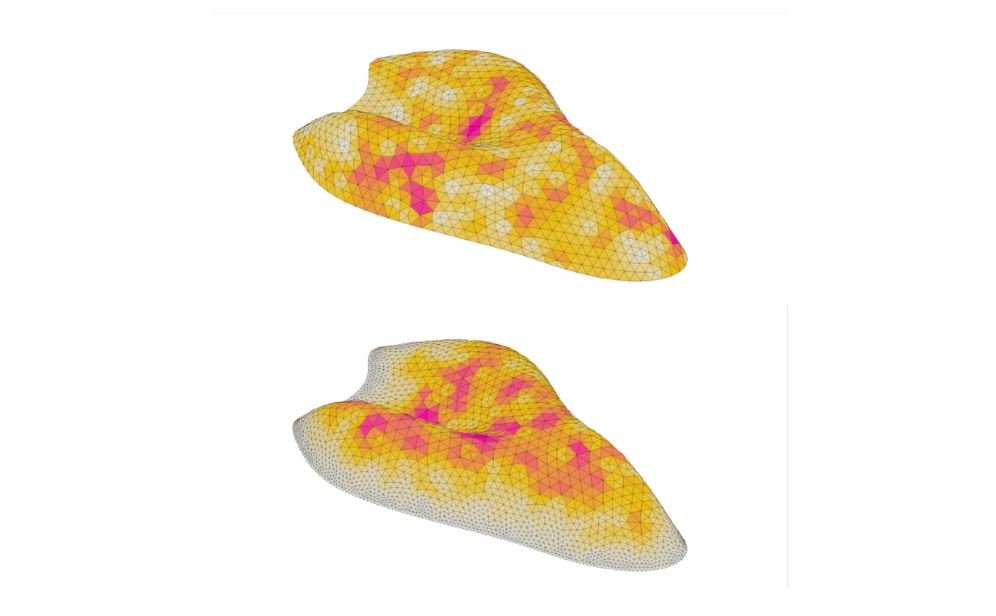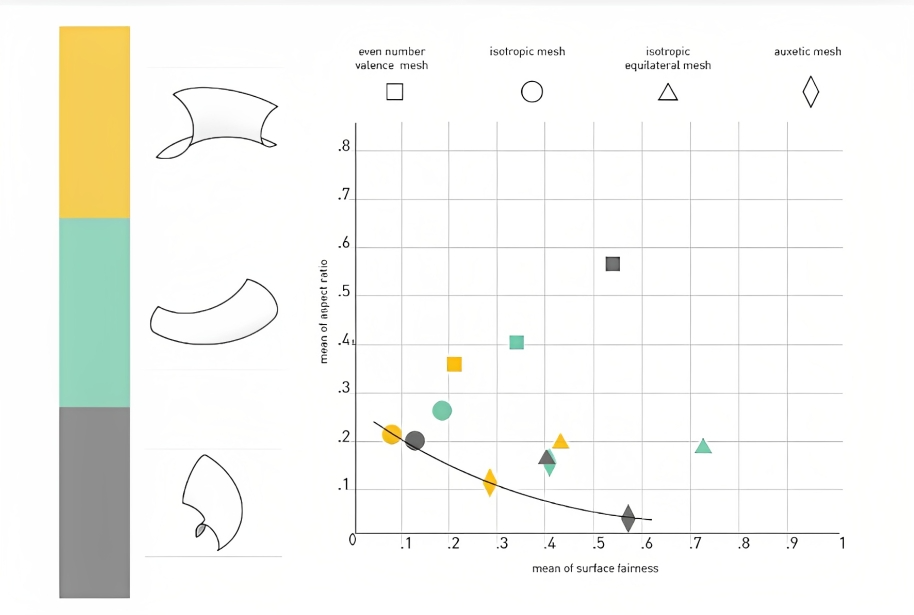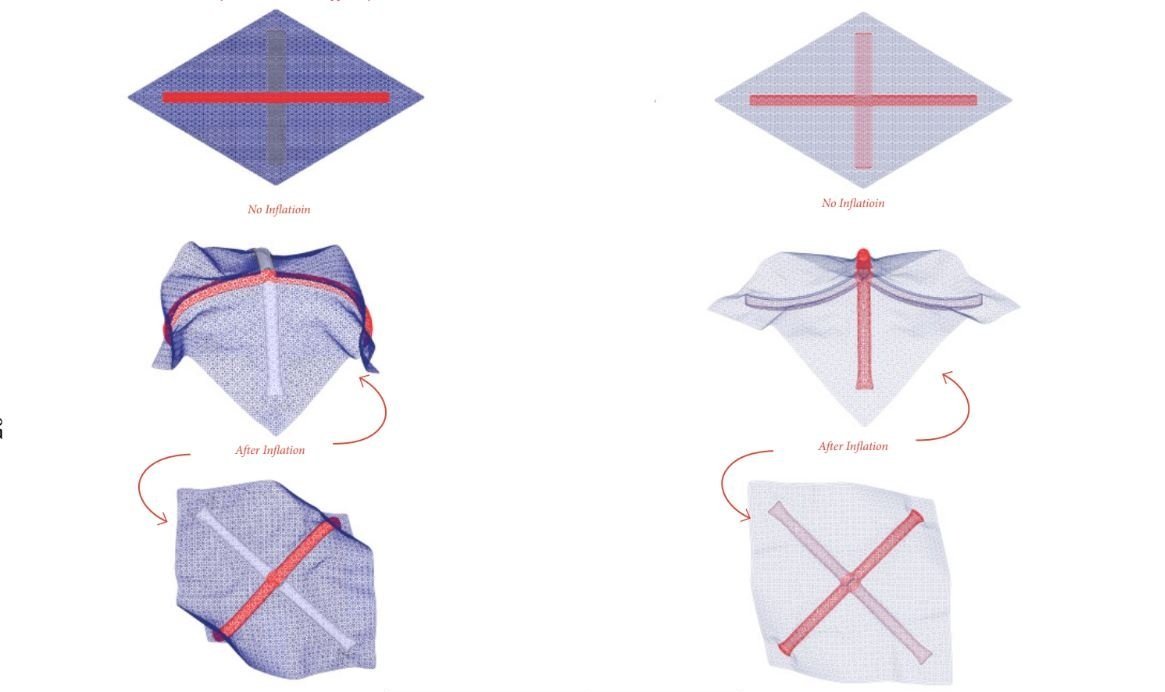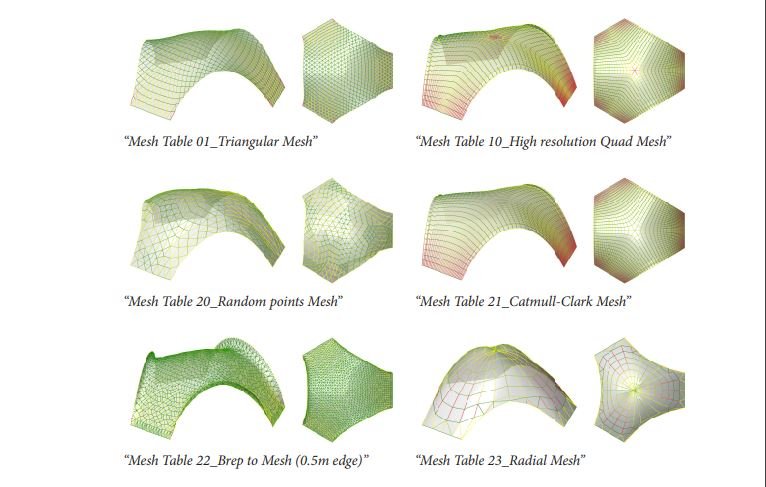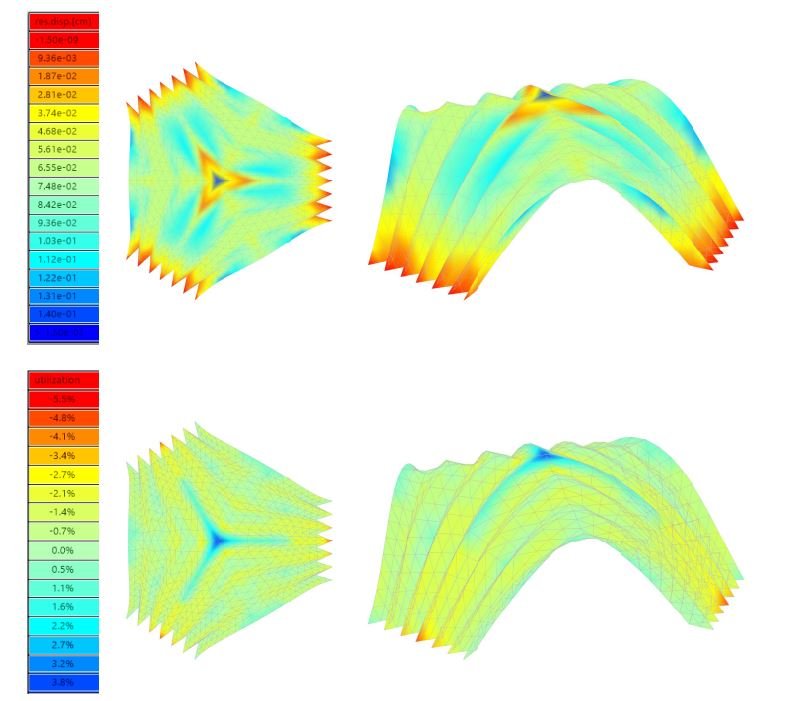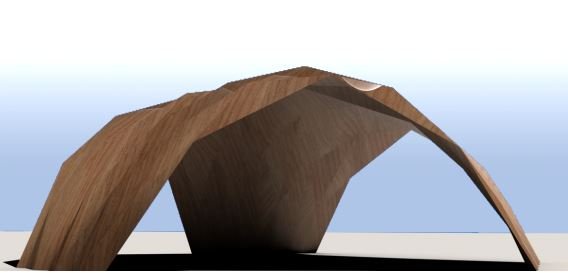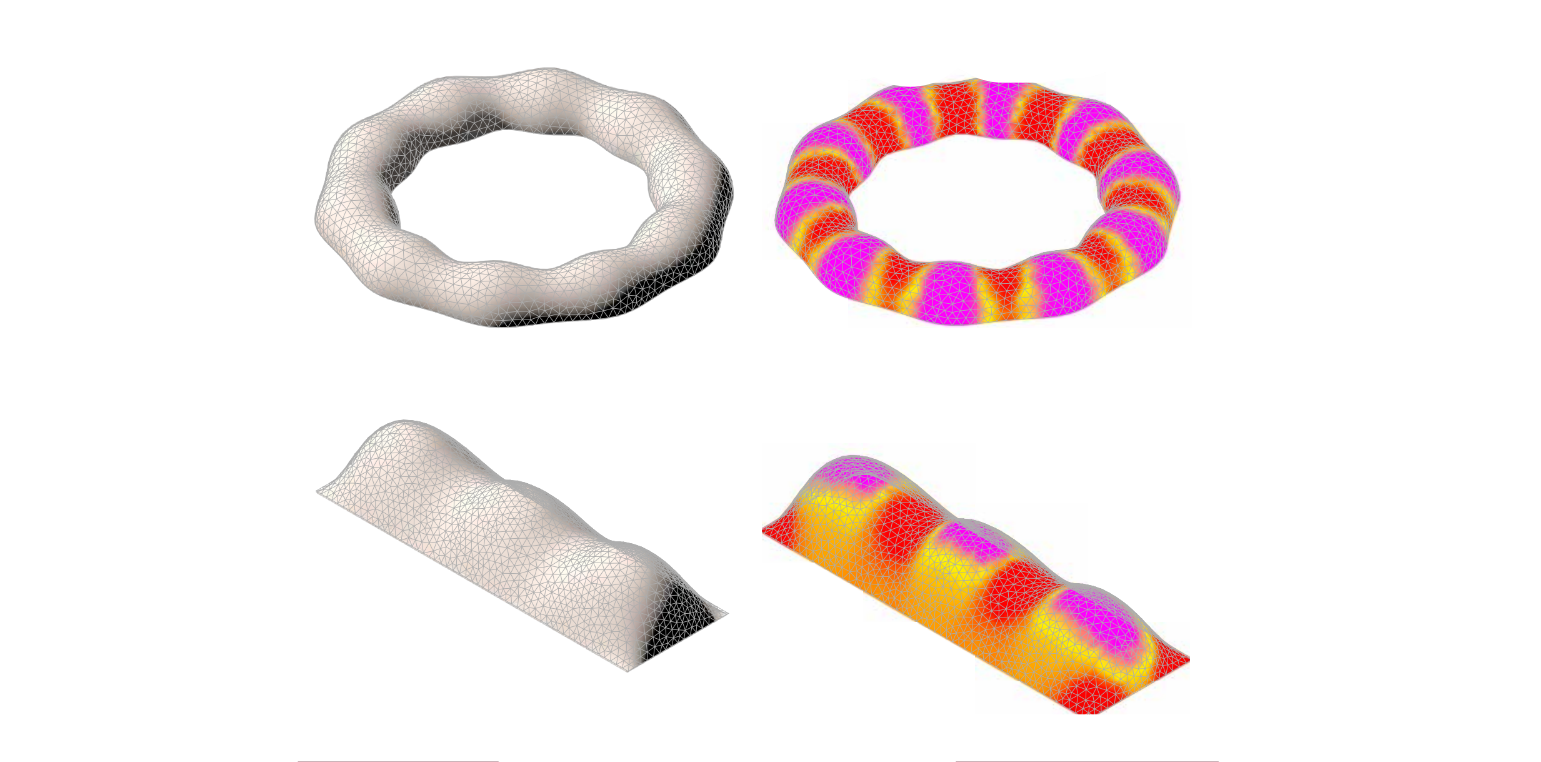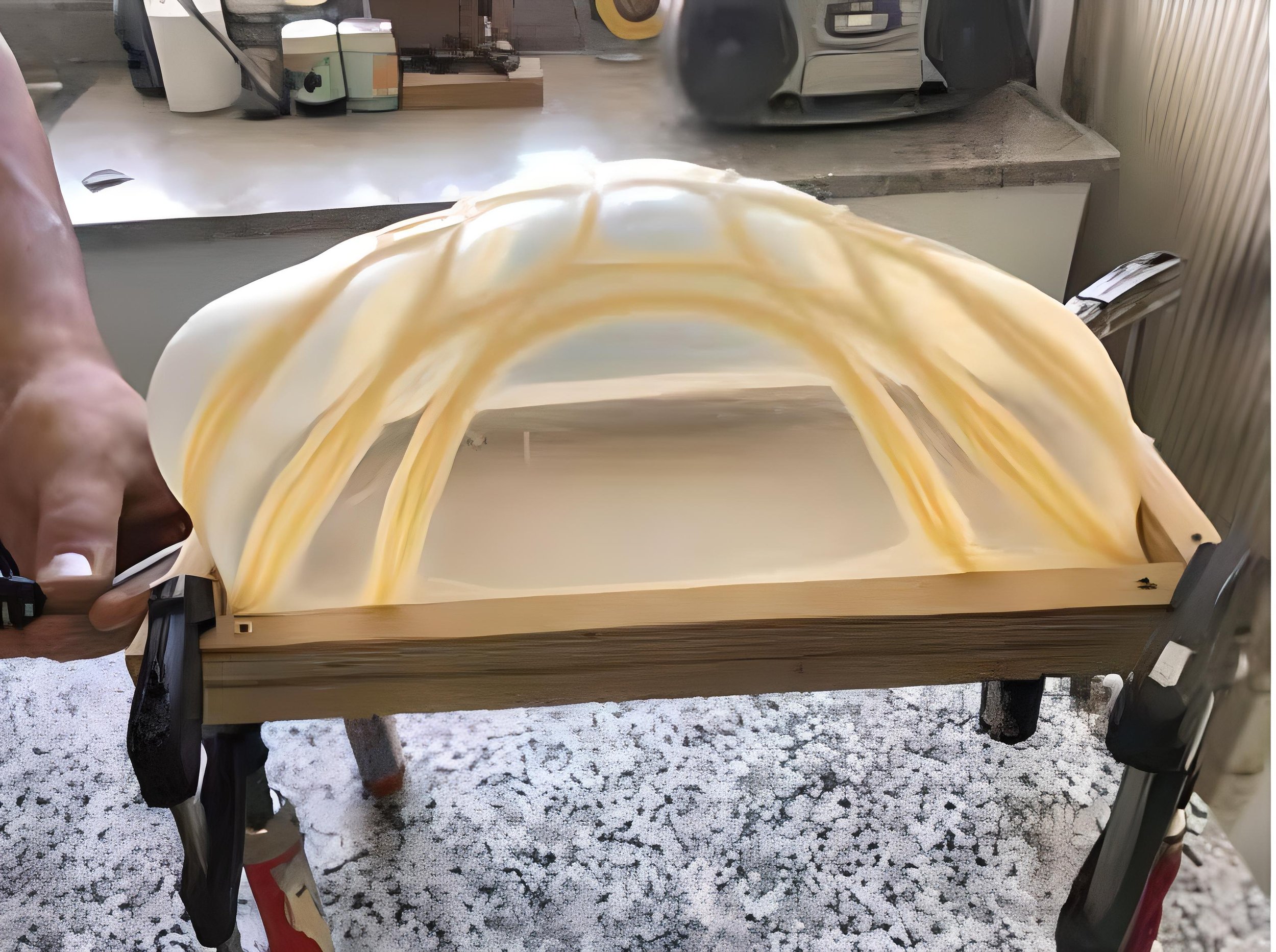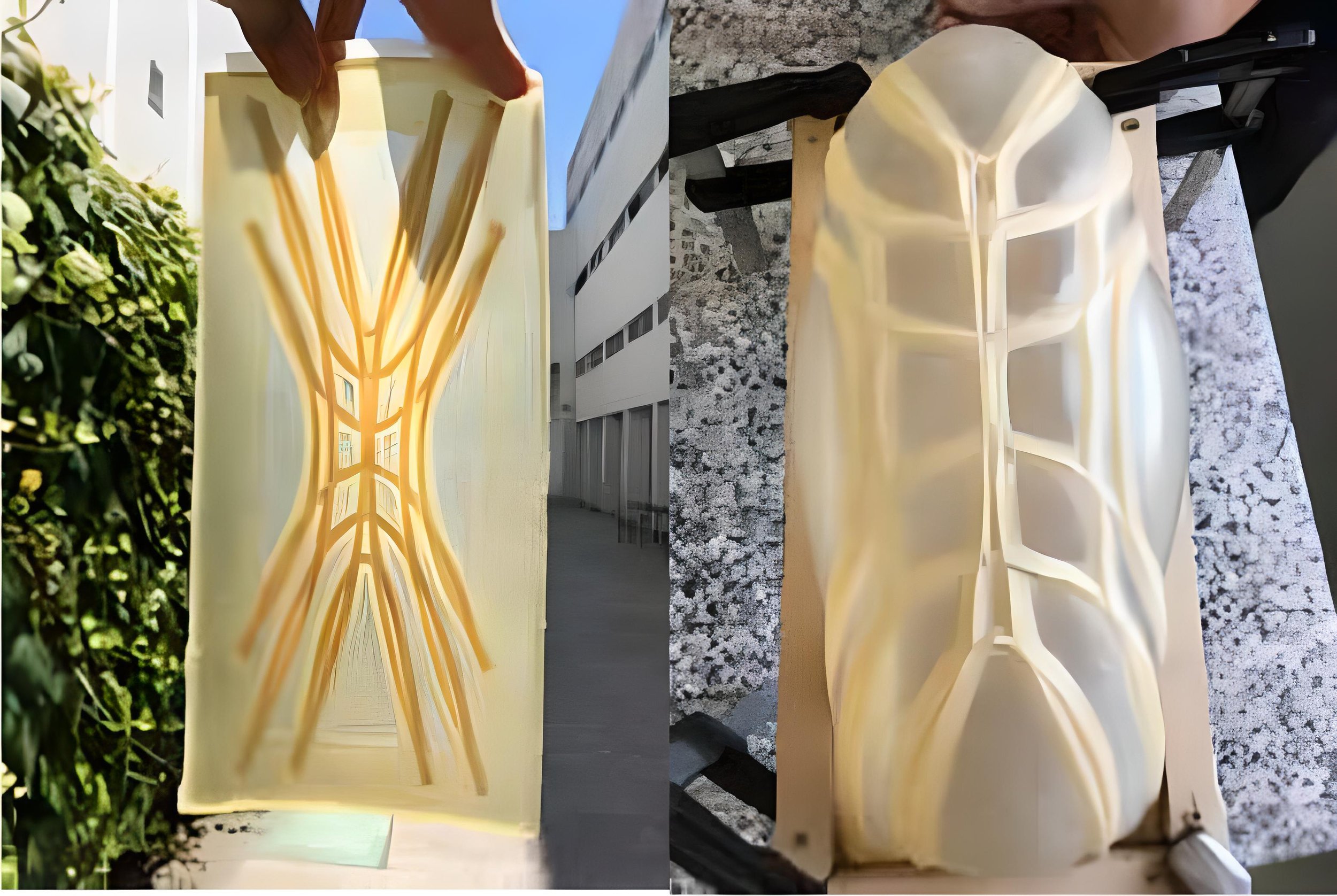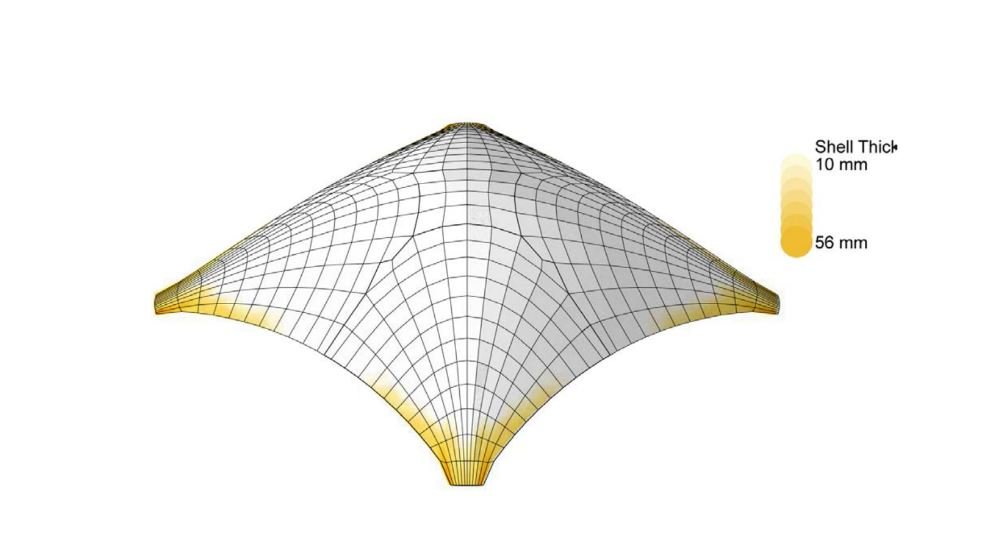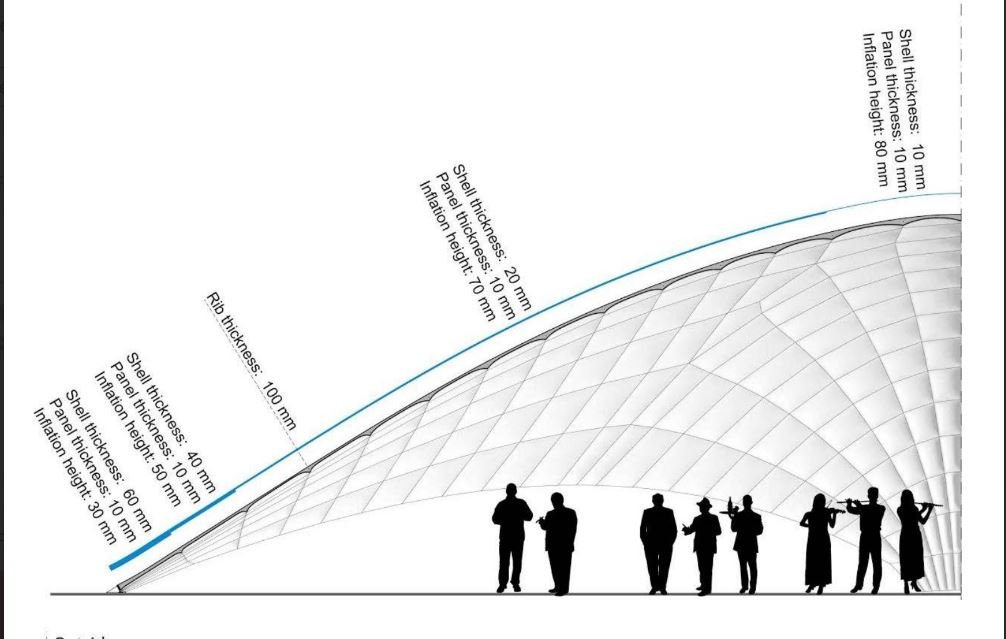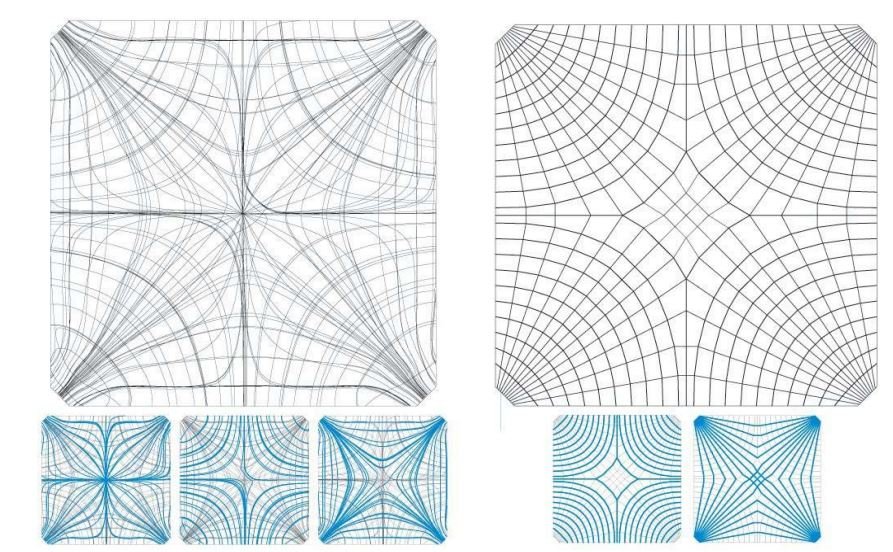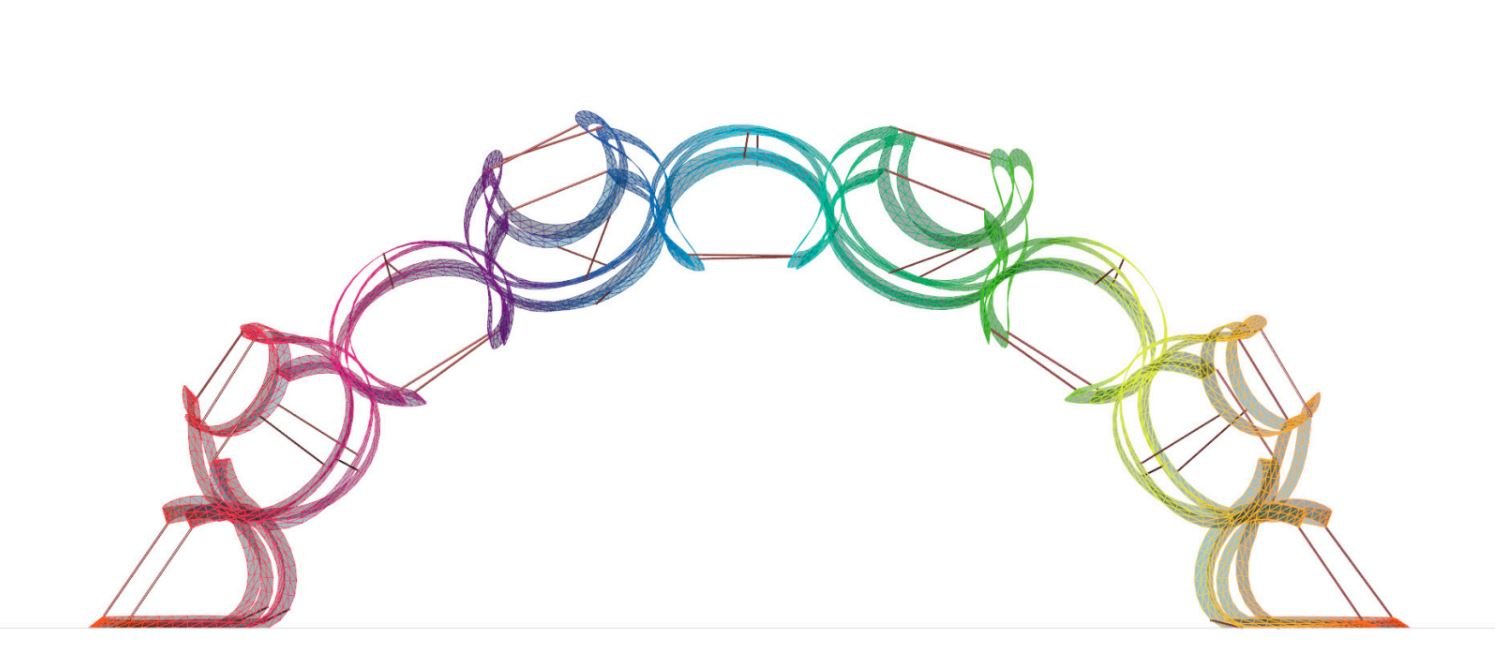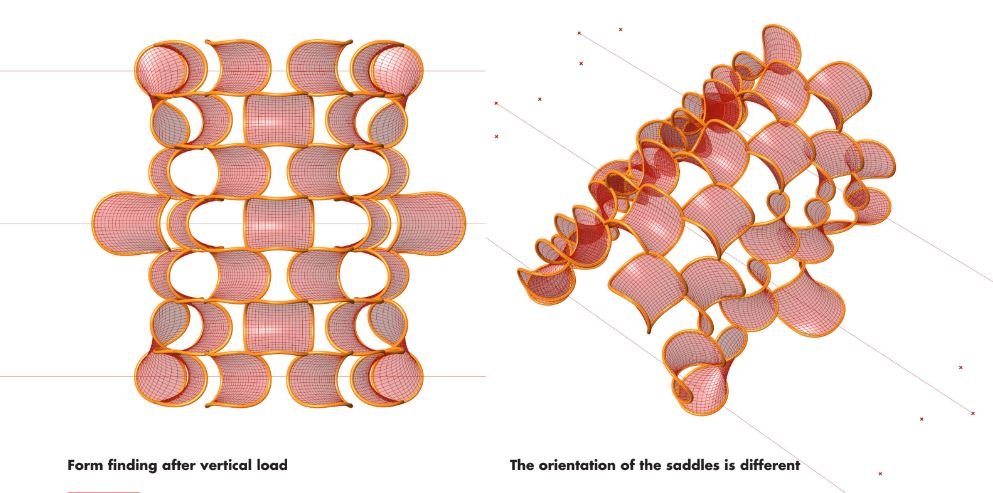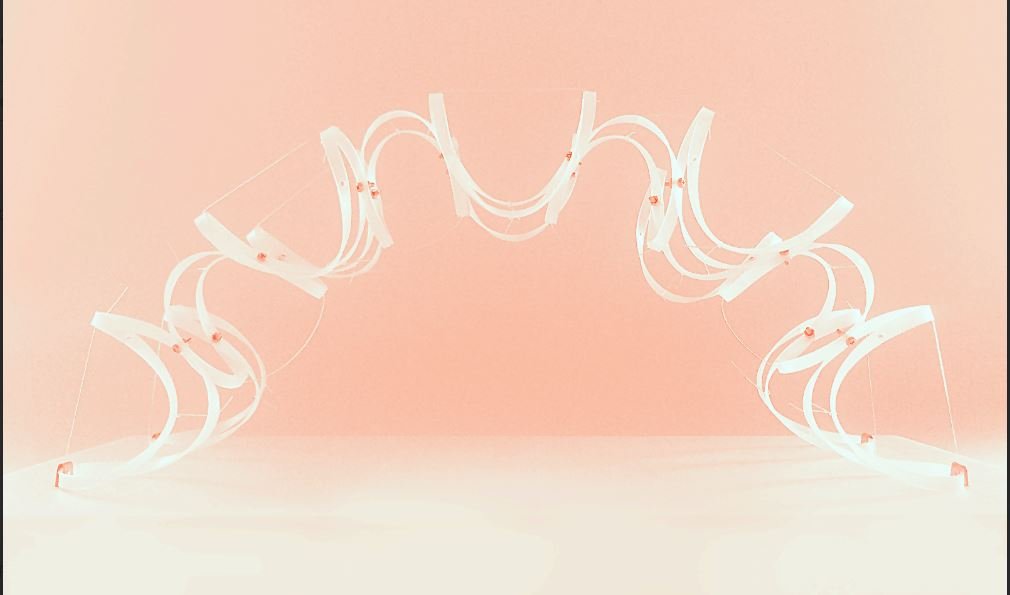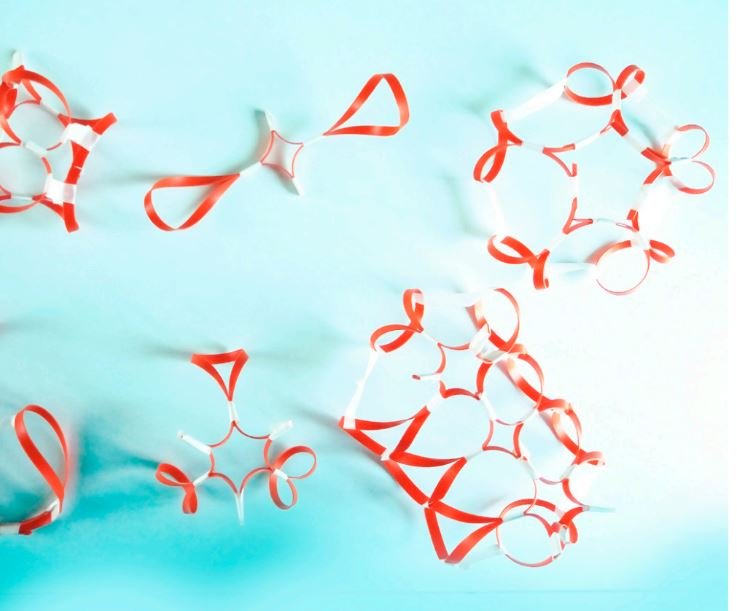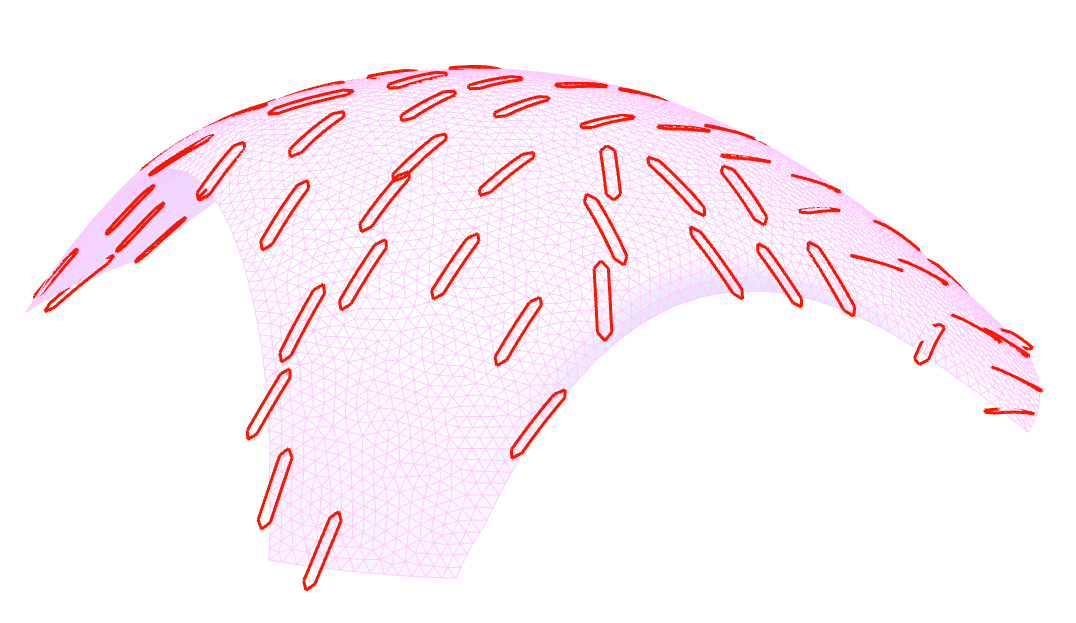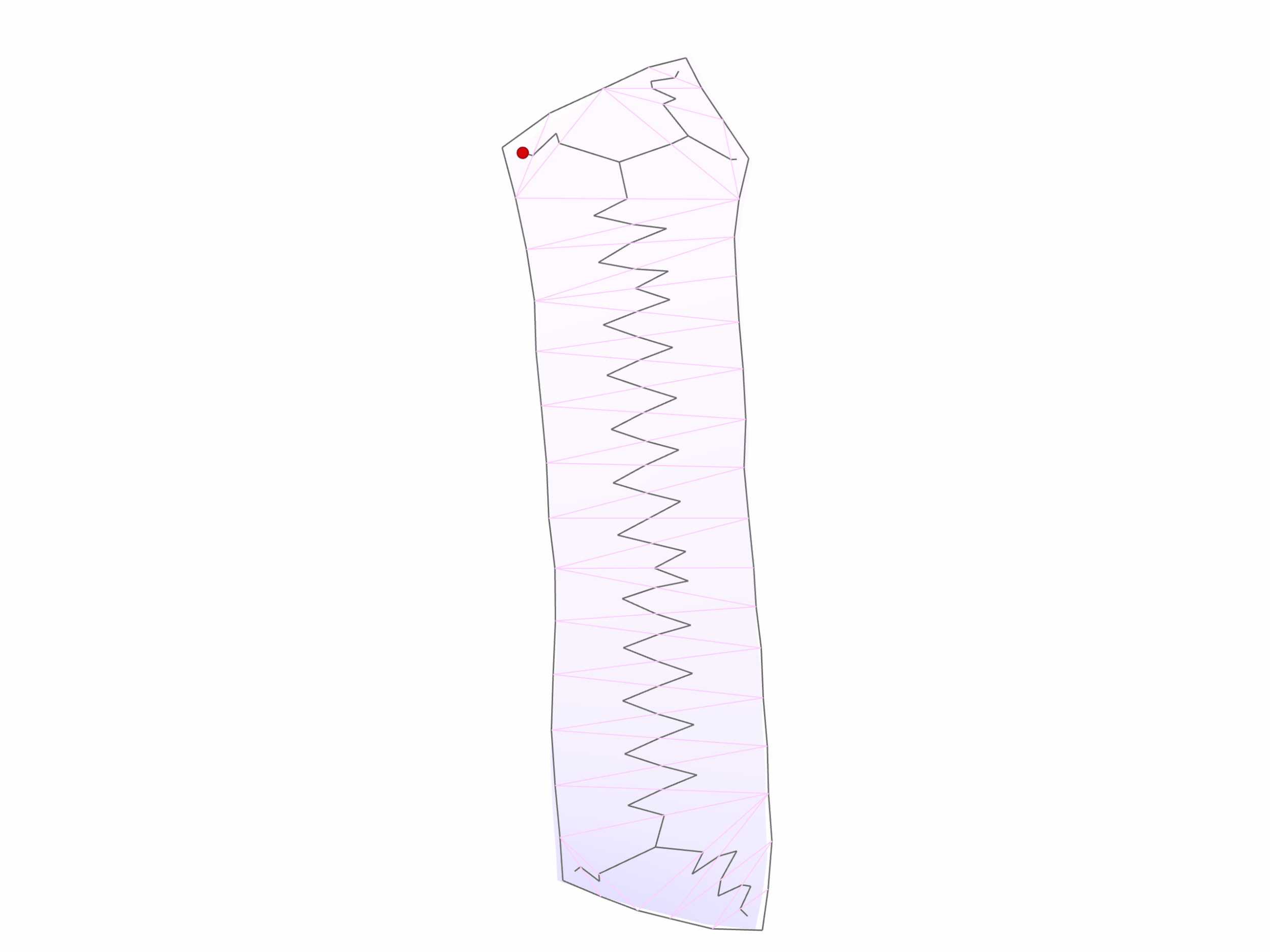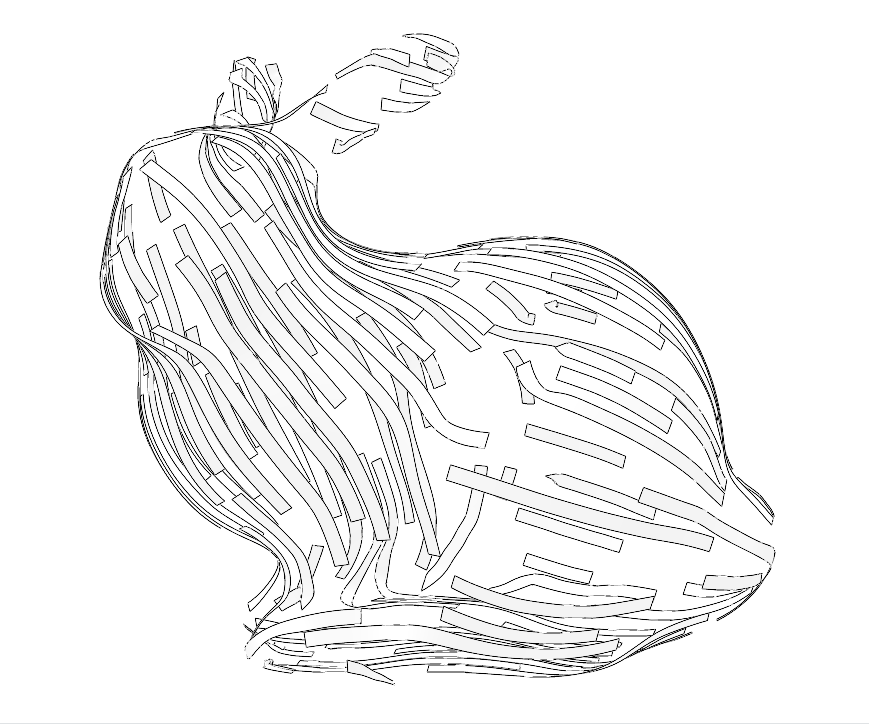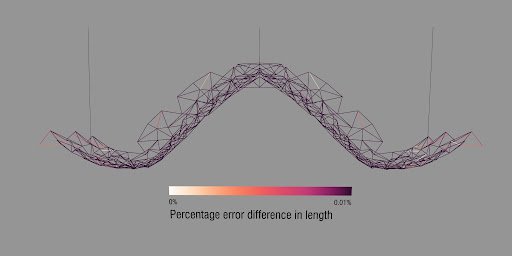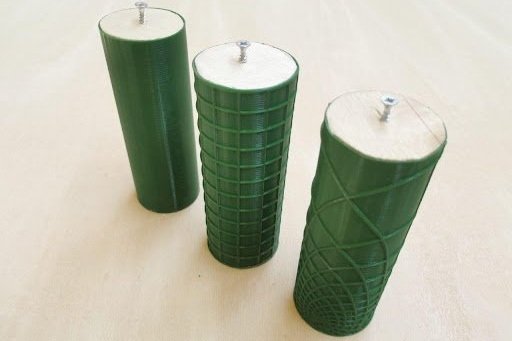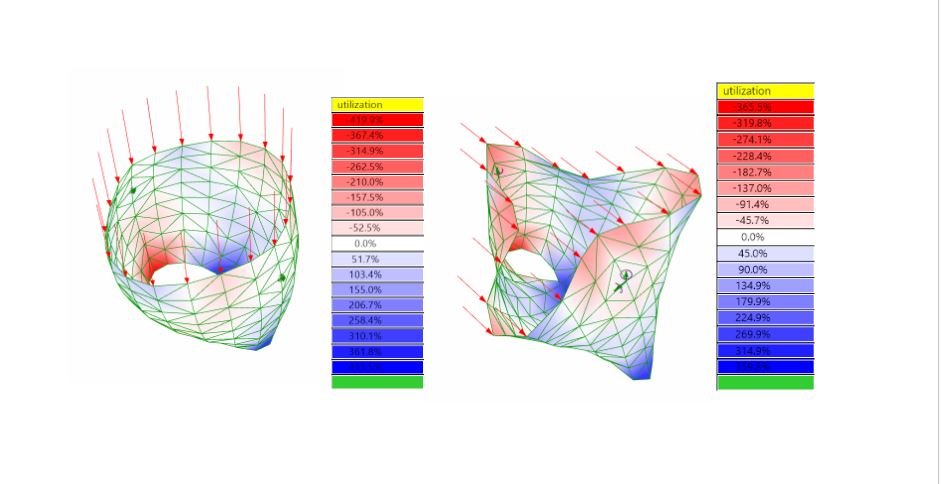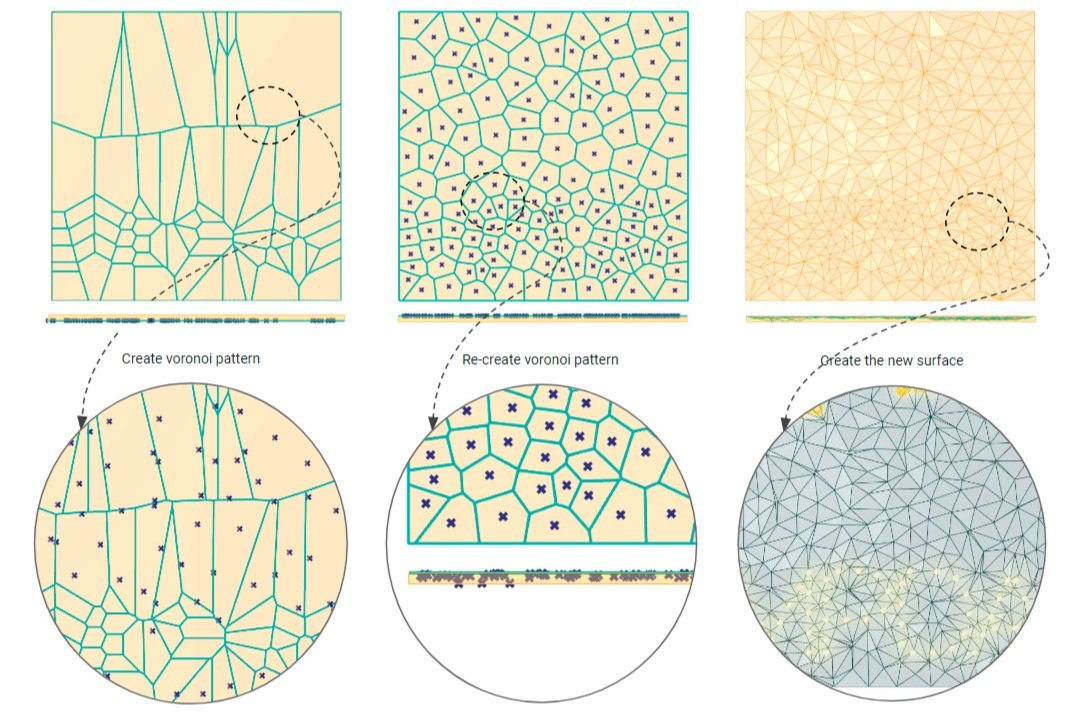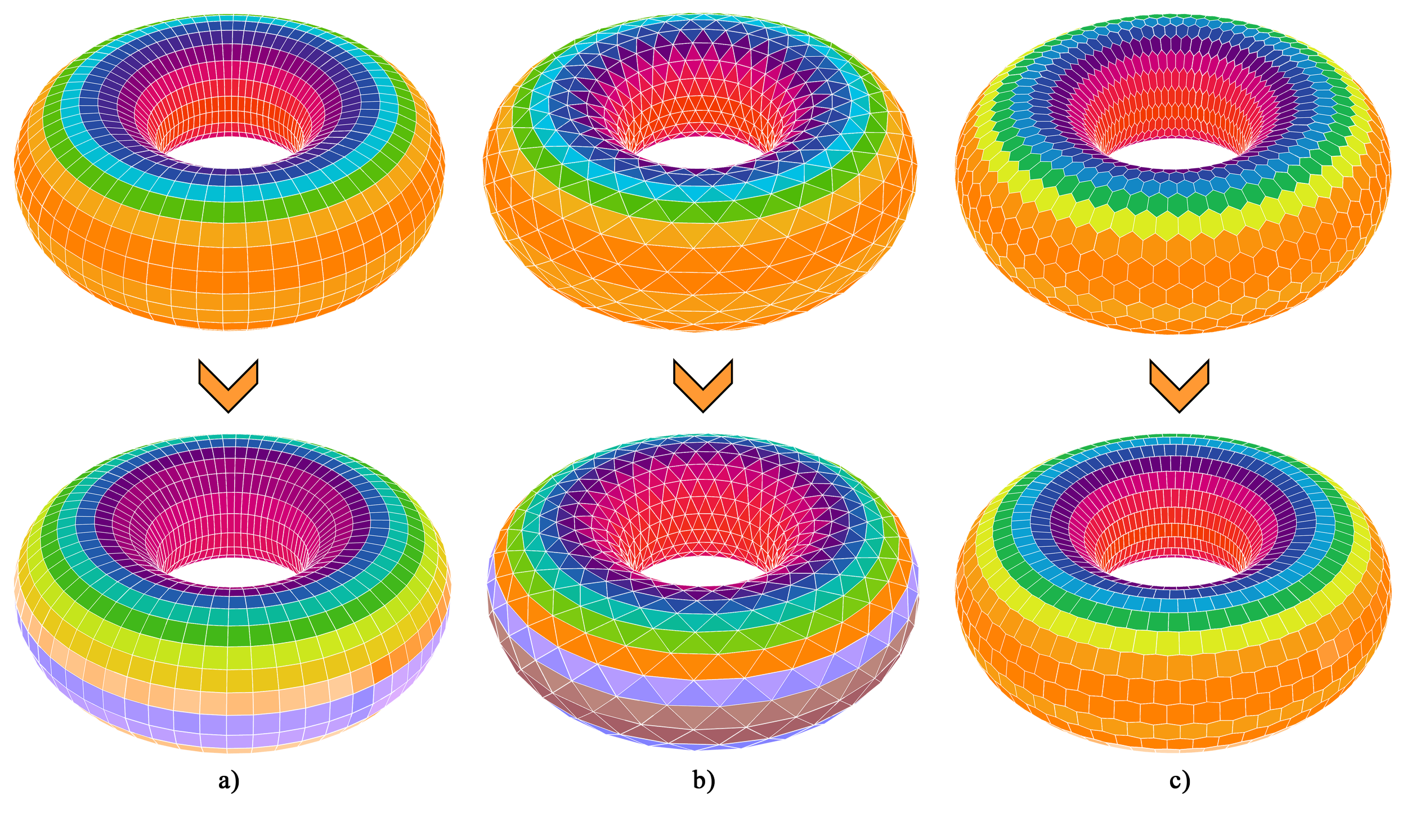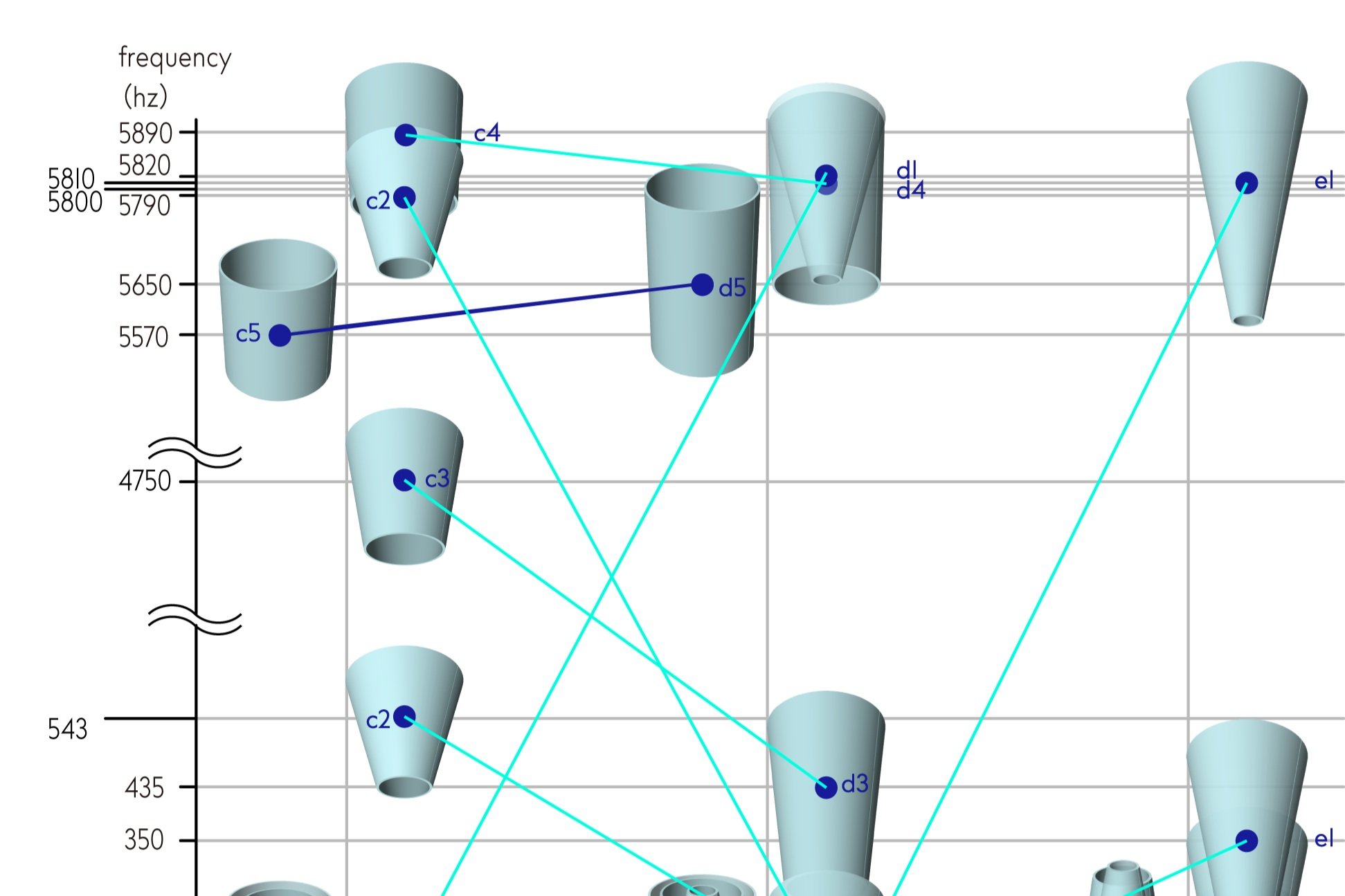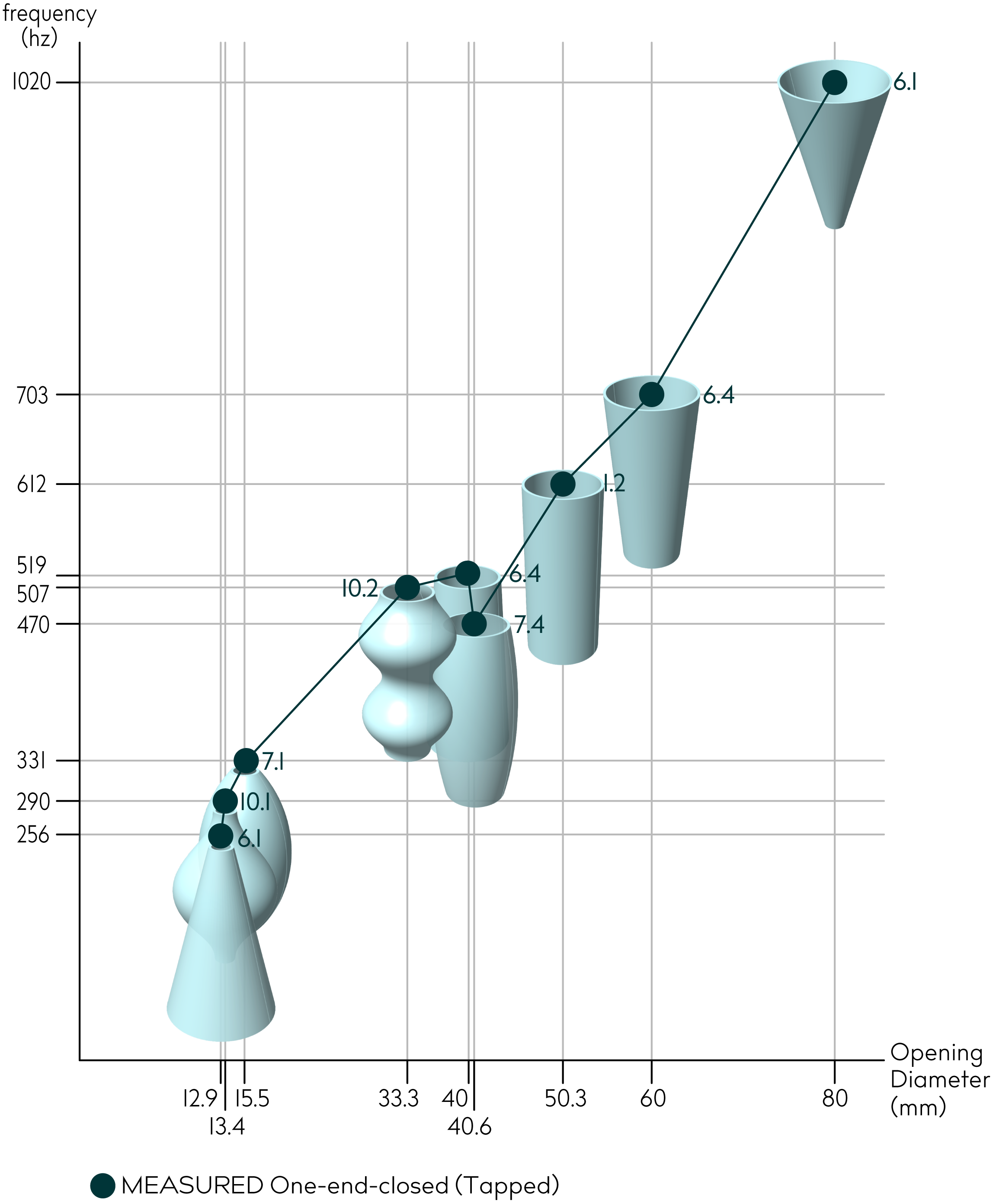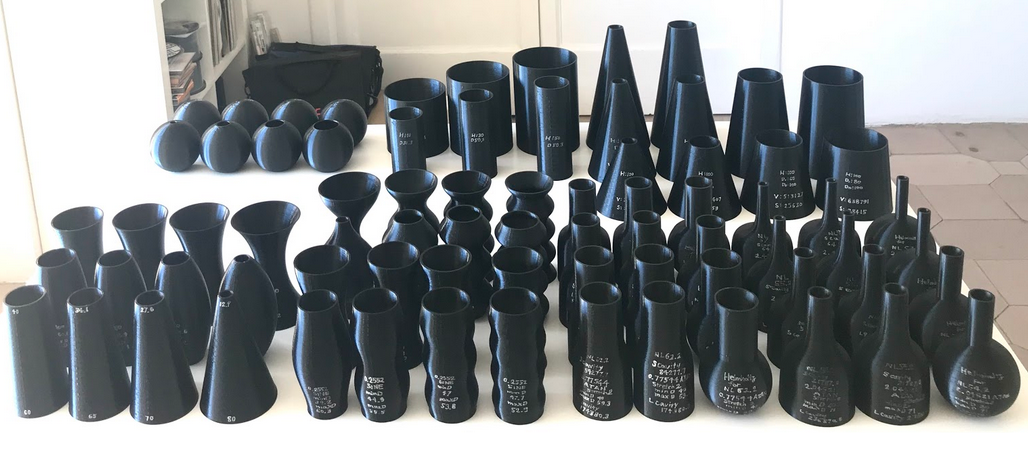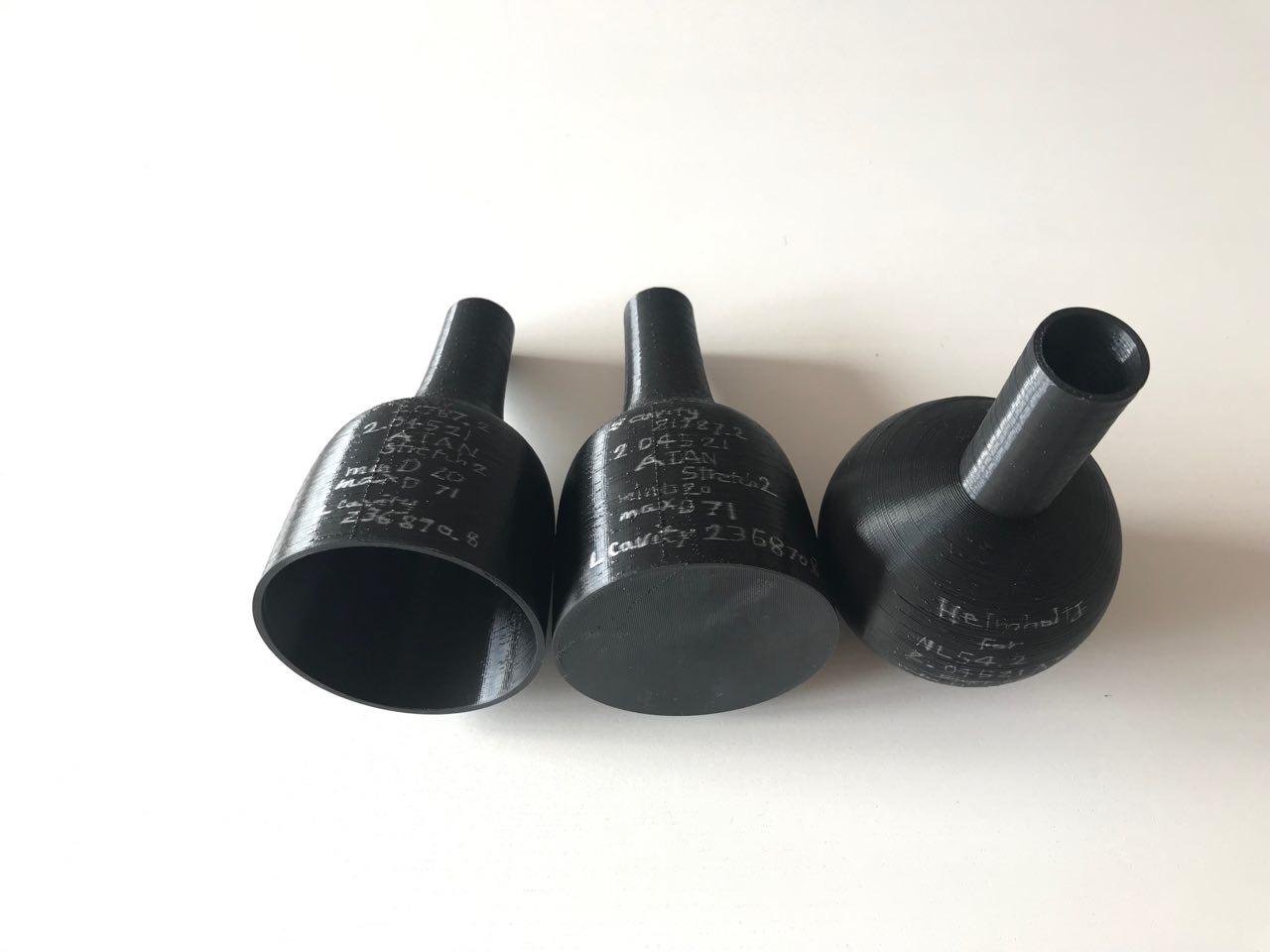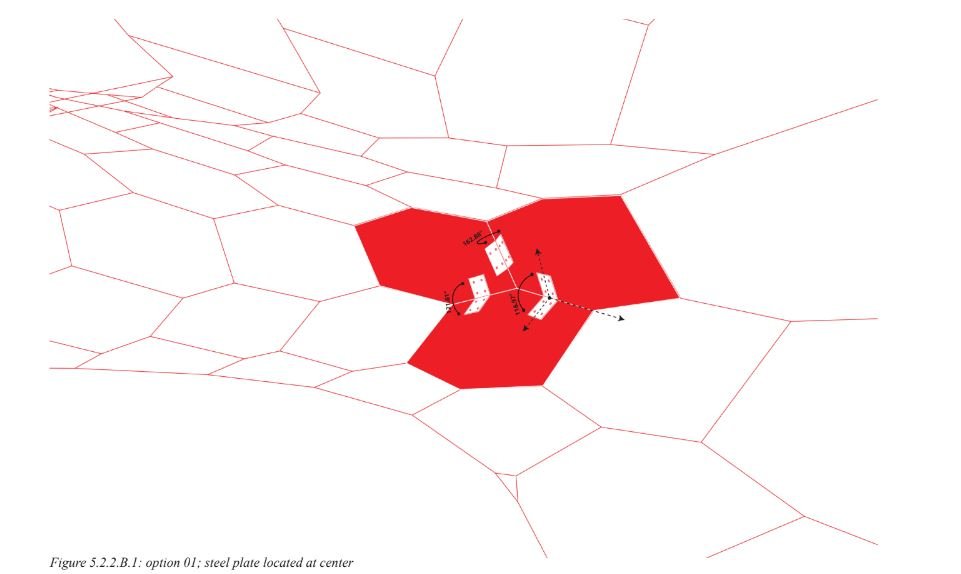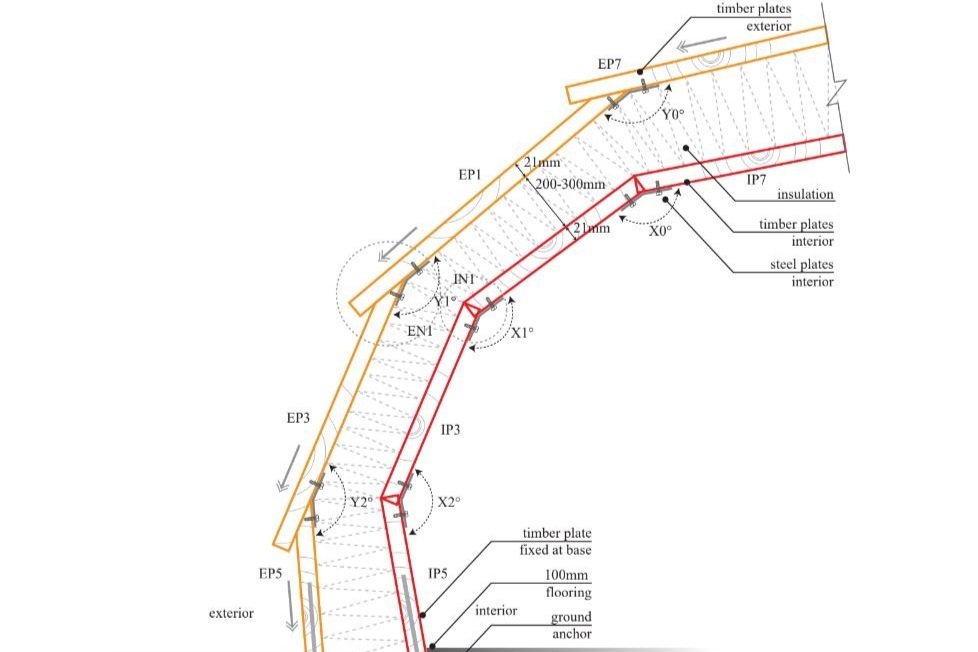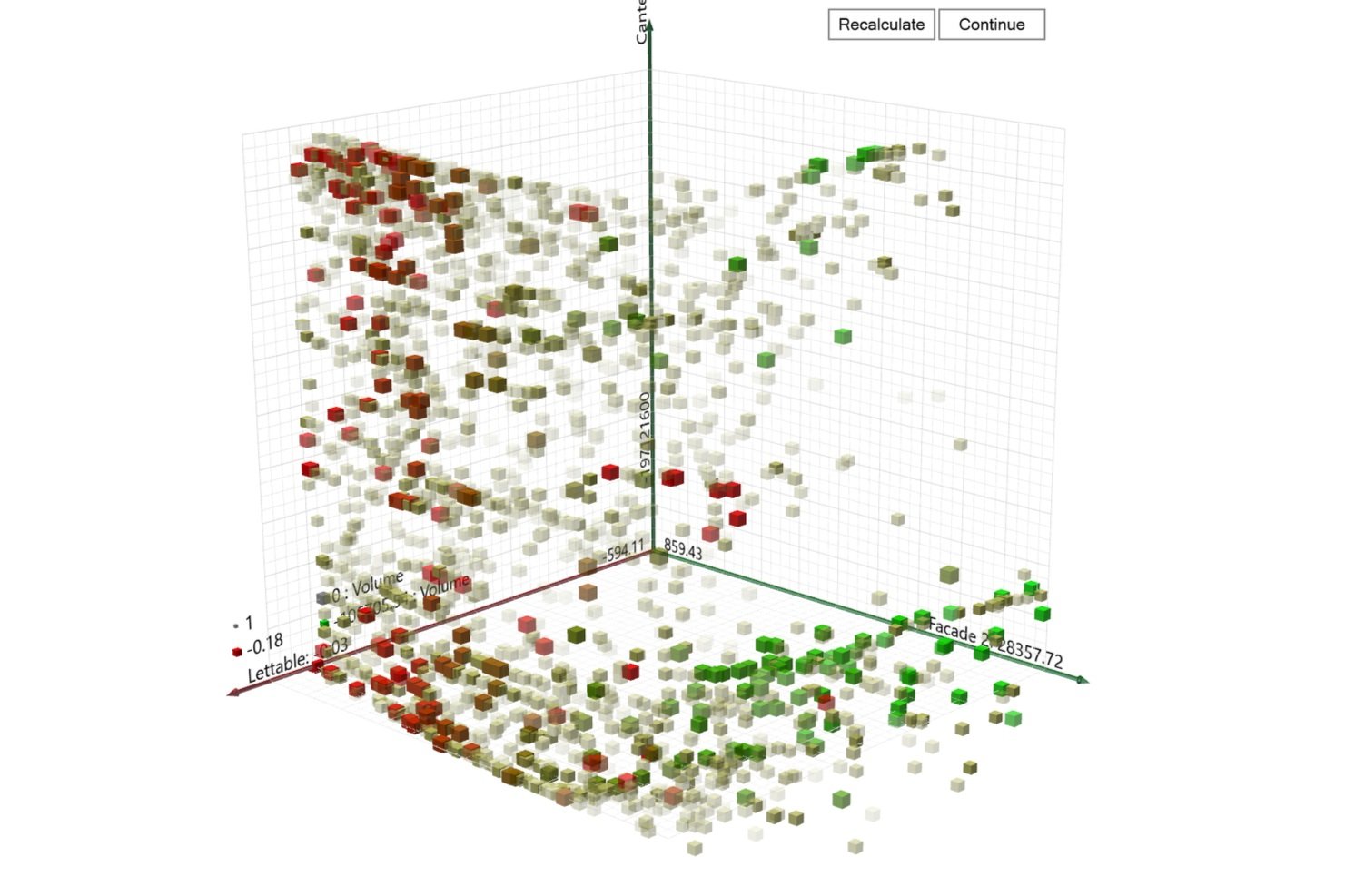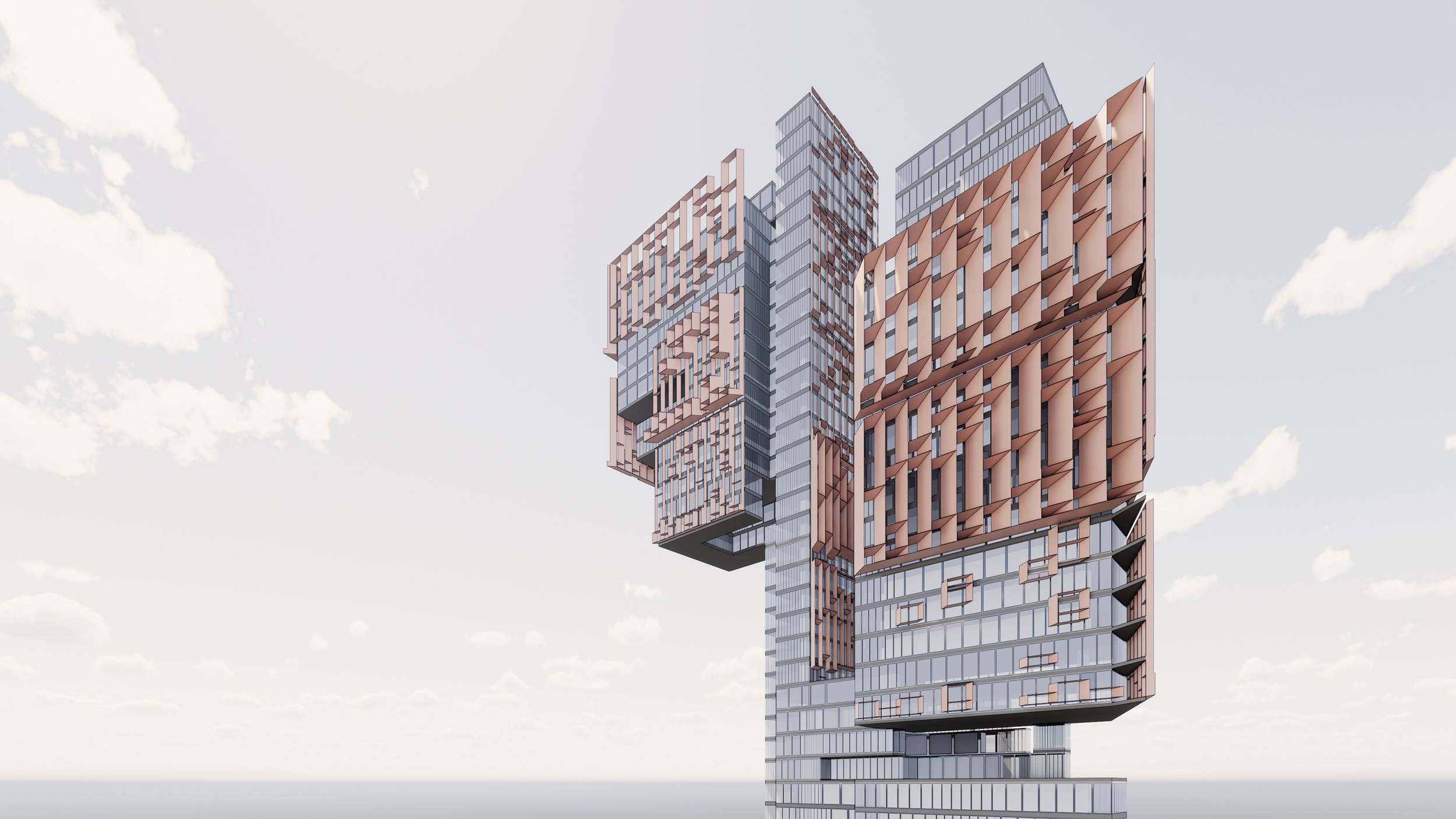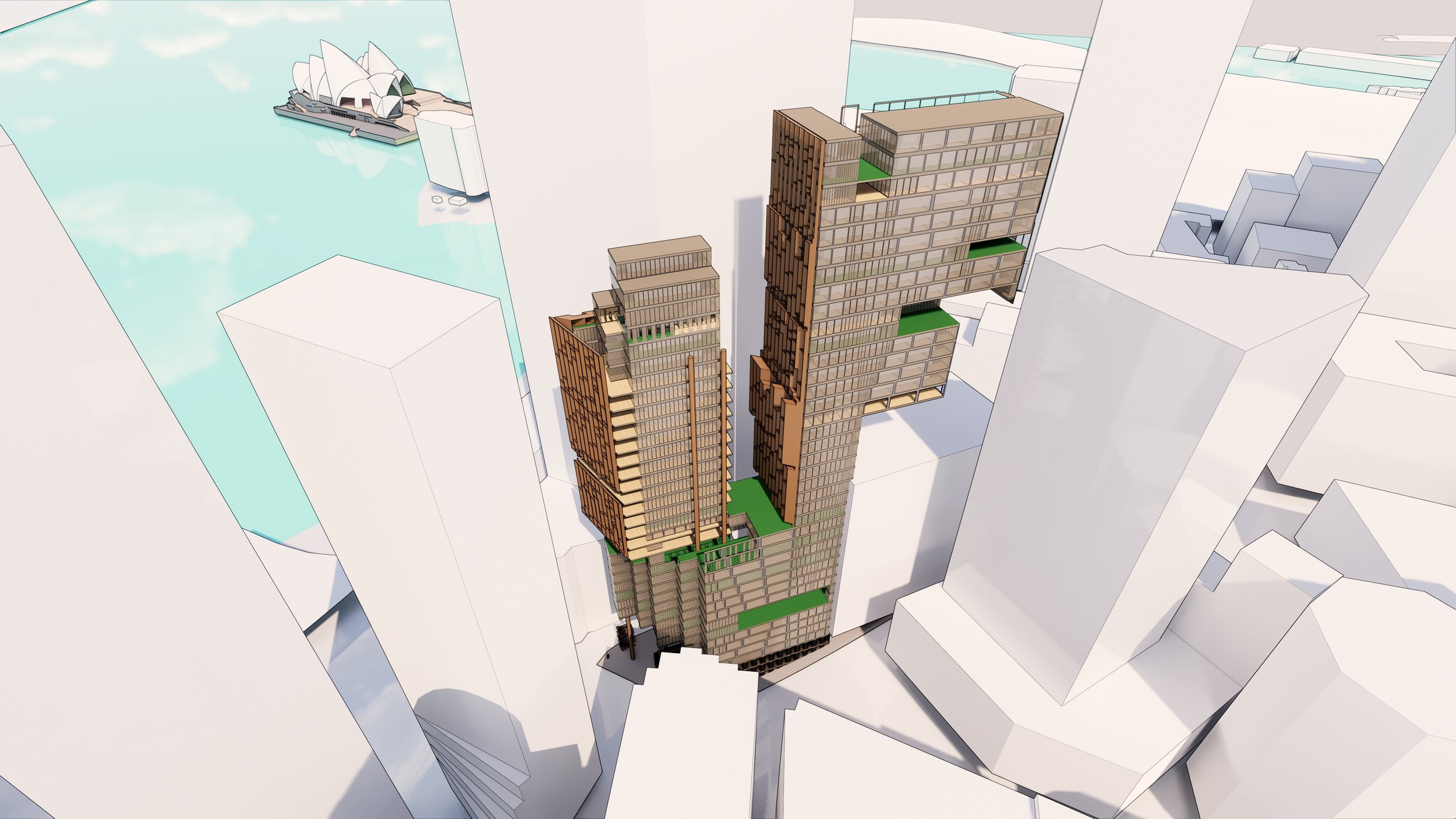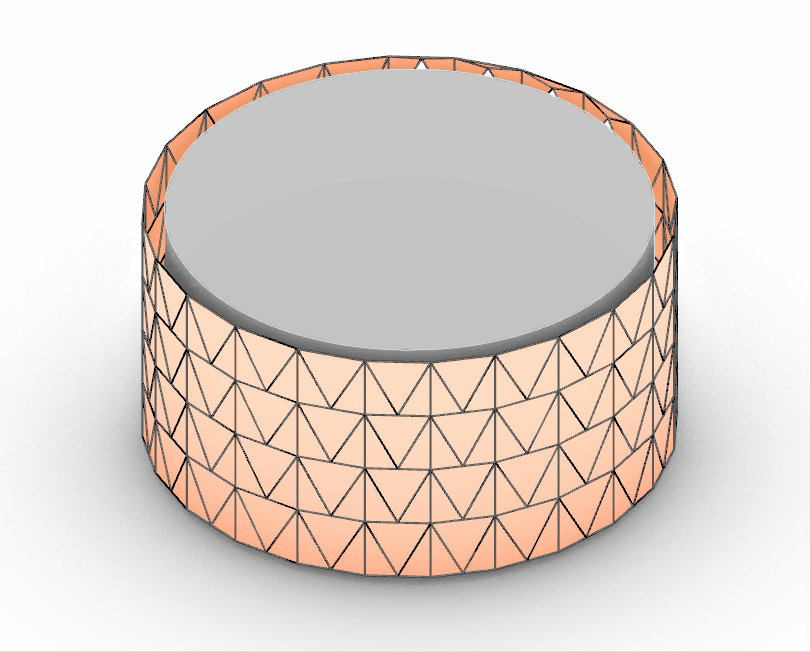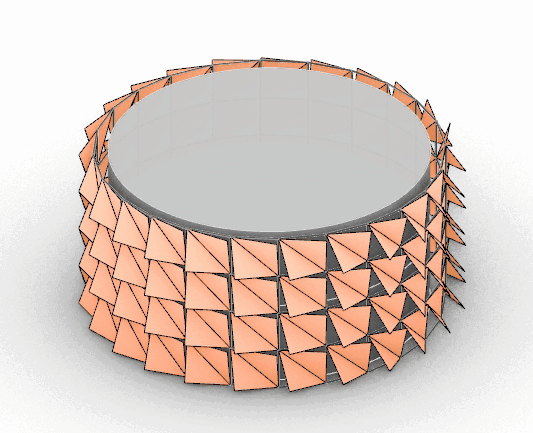Research and innovation
Master thesis is dedicated to generating original work, based on research, were the student will show how parametric design has changed his/her skills to produce architectural projects. This research work will be done under assistance of a tutor, one of the professors of the master, a will be evaluated by a jury of several members, from the faculty of the master.
Data driven design/ Industry oriented research
Resarch has to be guided by acurate simulations and predictions calibrated by experimentation.
Long-term research / Fun
Your research may lead to a phd research or a patent. Choose a topic where you feel confident and have fun when working on, and you know you can invest much time and effort.
Concise / Novelty
The framework has to be a fraction of a specific started research . The topic has to answer to a clear question you can pose. You have to prove it’s new, and worth working on it, there has to be a clear contribution
SHELL DESIGN
Evaluating Structural Efficiency of Segmented Shells Through Surface Area-to-Mass Ratio Across Varying Spans and Supports (2025)
Mehad HANBAL, Martin UQUILLAS, Youssef ESSAM
This study develops a methodology for evaluating the structural efficiency of segmented wooden gridshells, focusing on the Murgola Pavilion, a 134 m² pavilion composed of 72 polygonal modules. The study introduces the area-to-mass ratio as a performance metric, building upon the Bi-criteria Efficiency Indicator (Bic) concept to quantify the minimal material required to maximize surface area. Using a parametric workflow in Grasshopper, initial geometries were generated, dynamically relaxed with Kangaroo2, planarized, and iterated with Colibri to produce variations across spans, support numbers, and support-to-opening ratios. Structural analyses incorporated gravity, point, snow, and wind loads, refined with CFD simulations (Eddy3D and RWIND), and accounted for geometric nonlinearity, buckling, and material properties, including timber creep and plywood orthotropy. Beams were classified by location and optimized in cross-section, while plywood panels and joints ensured load continuity. Two studies revealed that odd numbers of supports and spans between 10–16 meters maximize the area-to-mass ratio, with optimal support distributions identified at 40/60 and 70/30 opening-to-support percentages. Post-optimization checks confirmed structural stability, reduced material use, and enhanced performance. The methodology provides designers with a quantifiable framework for early-stage decision-making, bridging structural efficiency, material sustainability, and spatial design considerations for medium-span lightweight segmented timber pavilions.
Keywords: Segmented Gridshells, Surface Area to Mass Ratio, Structural Efficiency, Buckling Analysis, Varying Supports.
Initial design of double-curved, soil-bamboo hybrid slab system (2025)
Maciej Król
This research investigates the design of a hybrid double curved slab system that combines loam and bamboo as sustainable structural materials, responding to contemporary challenges in construction that demand alternatives to reinforced concrete. The objective is to explore how a composite system can utilize the compressive strength of loam and the tensile performance of bamboo to form an efficient structural element suitable for small scale residential applications. A computational methodology was employed to form-find the soil vault, followed by the extraction and rationalization of principal stress lines to define the geometry of a bamboo grid optimized for bending capabilities. The system was further evaluated for structural analysis under ultimate limit state load combinations according to Eurocode standards.
Keywords: Sustainable construction, Bamboo-soil hybrid, Computational structural design, Principal stress line, Compression dominated slab.
Fabrication Driven Approach to Designing Hexagonal Timber Gridshells with Hybrid Steel-Timber Connections (2025)
Mihir BHAMARE, Arvind DAS A
This thesis explores a practical extension of the MPDA Studio 2 Node Pavilion design using parametric tools, focusing on simplifying fabrication with standard machines. It proposes an alternative approach for the Murgola Pavilion that is more economical and fabrication-aware. The research employs a parametric design methodology that integrates structural analysis with fabrication constraints, aiming to create a system compatible with standard timber sizes and buildable using basic tools such as CNC routers, drills, and saws—eliminating the need for costly 5- or 6-axis machines. The design incorporates hybrid steel-timber joints, combining the strength of steel with the sustainability and flexibility of timber, while ensuring ease of fabrication and assembly. Tools like Grasshopper and Karamba3D are used to evaluate design options and optimize structural performance. Overall, the study presents a design process that makes complex timber structures more practical, affordable, and easier to construct.
Keywords: Timber gridshells, Fabrication constraints, Hexagonal structures, Hybrid steel–timber joints, Digital fabrication, Affordable construction
Optimization of a Polygonal Shell Made from Prefabricated Beams Frames (2025)
Agustina COUZIER, Anna SOLA, Nathaly OSORIO
This research describes the comprehensive development of a modular wooden shell system based on hexagonal geometries and explores its potential as a strategy for designing lightweight and structurally efficient buildings. The design and construction process of the Múrgola Pavilion, consisting of beams that form completely flat hexagonal modules and plywood boards, is analyzed. This system is characterized by its prefabrication potential and rapid on-site assembly. However, the original pavilion has low structural efficiency and excessive material use. In response to these limitations, this work proposes a parametric optimization methodology that directly relates the structural stresses to the position and surface area of each element within the shell. Using a combination of parametric graphics tools and real-time simulation software, it is possible to evaluate the feasibility of optimization hypotheses, establishing comparisons between the total surface area of materials used and the stress levels applied to each component. Beyond the case study of the Múrgola Pavilion, this research proposes an interdisciplinary framework that integrates parametric design, structural analysis, and digital manufacturing processes, demonstrating how it is possible to move toward systems capable of combining structural efficiency, material economy, and an expressive spatial experience.
Keywords: Polygonal modular shell, Geometry optimization, Computational fabrication, Modular system, Timber construction, Structural stiffening panels.
Mass Efficiency and System Selection in Segmented Timber Shells Across Span (2025)
Sayed SANOBAR, Dana MNEIMNEH, Pravin SHUBASH
This study consists of a comparative evaluation of a segmented timber shell, focusing on two construction systems: beam-based and plate-based shell. Selecting the right system is challenging, especially without a clear guideline to follow. A comparative workflow can provide clarity in decision making, where all designers will be able to evaluate structural and material performance while studying different aspects. This thesis will analyze different spans on each of the proposed systems (beams and plates). Parametric modeling and structural analysis will facilitate system selection and help identifying better solutions for every Span through comparative results. This methodology employs a Grasshopper based workflow integrating form finding through dynamic relaxation, geometric rationalization and structural analysis in Karamba 3D, enabling a consistent evaluation of performance along the prototypes. Both systems were studied under similar conditions and subjected to consistent evaluation of deflection and material mass. Findings will show that efficiency depends on the span of the shell and its segmentation strategy. This parametric comparison will act as a clarifying tool identifying the trade-offs between the two proposed construction systems, and will help making design decisions at an early stage.
Keywords: Construction System, Segmented Timber Shells, Deformation, Span, Deflection, Optimization.
Corrugation, planarity and structural performance in timber funnel shell building system (2024)
Agustin COLACCE, George SINIORA, Sadra KHOSRAVAN
This paper discusses the role of geometrical properties on structural capacity of the segmented timber funnel shells. Rigidity and stiffness can stem from increasing global inertial in the shell with adding corrugation in the suitable direction. The feature of discrete planar quad segments facilitates the possibility of pre-fabrication, utilizing one of the pioneer sectors in the industry, thus, achieving the material efficiency in order to mitigate the carbon footprint for a resilient architecture.
This paper presents the design to construction process of the Trevol Pavilion, a corrugated, segmented timber funnel shell joined with stiff metal plates. An inclusive computational workflow proposed for form-finding, optimization, and construction of the funnel shell pavilion. Later, a trio of planarity, structural performance and corrugations was investigated to find the best configuration for the funnel shell. Positioning the corrugation in the funnel shell was explored in order to answer where corrugation reduces the structural displacement with less planarization intervention.
Keywords: Computational Design, Form Finding, Segmented Timber Funnel Shells, Planar Quad Corrugated Shells, Dynamic Relaxation, Resilient Architecture, Pre-Fabrication, Funicular Structure Design.
Exploration for a Deployable Origami Funnel Module (2024)
Bruno GARCIA, Deel JORI
With the aim of minimising the assembly time and simplifying the assembly process of the Trevol Pavilion, this research explores the application of different origami patterns to the surface of a funnel, with the intention of determining how this structure can be folded in an efficient manner. Parametric design tools are used to create models on which to test different origami patterns, allowing dynamic visualisation of the folding motion and simultaneous geometrical analysis of the structures. The process begins with a first segmentation of the Trevol Pavilion, which consists of working with the shape of a funnel. An exhaustive number of tests are carried out to fold these geometries using origami patterns. As a result of this, different solutions are proposed for the development of what could become a modular funnel shaped architectural system.
Keywords: Origami pattern, folded plates structure, deployable structure, funnel shape, folding process.
Parametric Strategies for Reducing Energy Consumption in Single-Family Homes: A Climate-Based Approach
Teresa GARCIA CUERVA, Jorge BERNARDO GONZALEZ, Nouhaila DHIMNI, Purna CHANDER
The proposal focuses on a comprehensive, data-driven approach to designing single-family homes that optimizes their shape and features to reduce energy consumption. It uses parametric design techniques to analyze and improve the shape and characteristics of a housing prototype. This approach helps identify the most energy-efficient configurations by considering factors like solar radiation and thermal performance. It also addresses how architectural design can be adapted to the specific climate conditions of different regions. This includes adjusting parameters such as the building envelope (house shape), window size and placement, shading devices, and roof slope to maximize energy efficiency in each context. A key contribution is showing how optimizing the architectural form can significantly reduce energy consumption, not only by lowering heating and cooling needs but also by improving the indoor environmental quality of the homes.
Keywords: Climate, Design variables, House shape, Radiation, Optimization, Energy analysis, Computational tools, Parametric design, Climate, Comfort, Sustainability, Energy consumption.
Timber Fish Scale Shell (2024)
Rafael HELLIN GARCÍA. Maximiliano PEÑA HUERTA
In a world where woodwork digital fabrication technologies are getting more advanced but not less complex, we ask ourselves what can be achieved with the technology that is nowadays an industry standard. Our aim in this research is to explore the potential of low-tech machinery and standard joinery techniques, often used on traditional woodwork, inside the lightweight structures field. We can classify the scope of this investigation in three intentions: Practicality, because we want to make something feasible with well-known techniques and materials; Formality, because we aim to create a system that adapts to a wide range of shapes; and Functionality, because our goal is to give the structure waterproof properties and the possibility to have breathable intakes. To address this challenge we will dive into the mathematical limitations and capabilities of working with planar faces and perpendicular joinery.
Keywords: Developable surfaces, cladding, overlapping, lightweight structures, waterproof, reciprocal frames, laminated timber, wooden joinery, 3-axis CNC, triangular meshes, breathable structure.
Self-Strutted Freeform Dome (2023)
Anna NASRALLAH, Arshita RAVINDRANATHAN, Bindhuja AMEERPET, Nayib PÈREZ, Mariona RODRÍGUEZ, Shylesh KUMAR
In this paper, a complete process from design to construction is presented, aiming for a real scale self-strutted shell, using plywood, with the design generation being analyzed throughout the different stages.
The core of our research is to explore the distribution of a set of boards so that we can build a plydome structure with overlap of two boards on each corner. Therefore, advanced computational tools are applied to develop optimization algorithms in order to find the most suitable overlaps. The project will be further developed trying the system and methodology on different topologies in order to prove and validate our approach. Lastly, the results of different approaches, including the constructed one, are compared and evaluated giving an insight on the best performance.
The shell, was designed in an academic framework during the Master of Parametric Design in Architecture at the Universitat Politècnica de Catalunya and constructed for Art & Gavarres, a festival that starts from the idea that art can be a tool that helps us reflect and change our view of the landscape.
Keywords: Form finding, active bending, structural optimization, structural performance, plydome.
Integrative Design and Engineering for Timber Folded Plate Structures of Free-Form Vaulted Systems
Imma BIGAS, Nerea GARDNER
The present research describes the comprehensive development of a timber folded plate structure, and explores the potential of the folding principle for designing free-form vaulted shells. Corrugated structures are well-known for their efficiency with regard to material saving and structural reliability, by stiffening a thin surface with the introduction of a series of folds through an optimized geometric design. Their inherent composition of discrete planar elements allows a high degree of pre-fabrication, offering the possibility to benefit from one of the most advanced sectors in the industry, thereby attaining a responsible material consumption while minimizing the ecological footprint. This paper discusses the integrative design process and construction of the Pentaura Pavilion, a timber folded shell locally joined with few stiff mechanical fasteners. The authors further investigate the influence of the creasing technique in relation to its amplitude of corrugation.
Keywords: Timber folded plate structures, Free-form vaulted shells, Integrative design, Form-finding, Geometry optimization, Structural engineering, Computational fabrication, Modular system
Post-Optimization of a Single-Layer Elastic Gridshell (2022)
Julien ROBINET, Hsiang-Yi LEE, Michael RAUCH
This study falls within the scope of research dedicated to the design of small-scale elastic gridshells made of timber. A single-layer gridshell is presented, which was built in an academic framework during the Master of Parametric Design in Architecture at the Universitat Politècnica de Catalunya. It is studied how far its structural performance can be improved while maintaining the simplicity of single-layer gridshells and avoiding extensive designs of the nodes. Therefore, advanced computational tools are applied to develop optimization algorithms to generate efficient patterns for the bracing and the second layer.
Keywords: Chebyshev, elastic gridshell, bracing, efficiency, structural optimization, structural performance.
Topology based Construction Process Optimization (2022)
Ellie GALATA, Srushti MAHAJAN, Jinfeng WU
In this paper, a complete process from design to construction is presented, aiming for a real scale gridshell, using wood (more specifically plywood), with the design generation being analyzed throughout the different stages. The type of gridshell examined is composed of linear elements (planks) laying on a network of 3 directional pseudo geodesic curves that belong to the surface and the final result is a structurally efficient, lightweight elastic gridshell. Taking under consideration the on-site experiences, the difficulties occurred through the construction phase, the decisions and the artifacts that accelerated the procedure, an evaluation and a critical overview of the steps followed, as well as their efficiency, is approached. In the frame of this case study, research is carried out for optimisation of the construction process in terms of time needed and facilitating its assembly, with the best possible use of auxiliary means. Lastly, the results of different approaches, including the realized one, are compared and evaluated giving an insight on the best performance along the sequence of assembly.
Keywords: 3 directional geodesic gridshell, geodesic gridshell, bending-active, optimization, construction process, optimized assembly, auxiliary means, parametric optimisation.
Stress Line Driven Timber Gridshell Optimization (2022)
Deniz E ARSLAN, Leonardo GEREMIA, Khaled SADEDEN, Po-An HSIEH
This paper expands on existing research in the application of principal stresslines to develop free-standing double-curvature structures and more specifically, explores the impact of stressline based derivatives on mass reduction in timber gridshells when compared to other approaches of the physical construction of freeform shapes. The research presents a framework for principal stresslines form finding to create an optimized gridshell. In addition, existing methods are explored for generating principal stress lines its strengths/weaknesses are examined to determine the optimal usage patterns. As an initial proof of concept, a principal stress line based optimization of a gridshell is taken and compared to other timber gridshells approaches, namely small-scale Chebyshev nets and geodesic based designs. Its successfully demonstrated that the use of principal stresslines could be an innovative method for reducing mass in timber gridshells without any negative impact on structural integrity.
Keywords: Principal stresslines, Computer-aided design, Structure optimization, Massing Reduction, Gridshell, Timber Structure Analysis.
Generation and Assembly of Polymorphic - Fixed Radius Circle Packing Structures (2021)
Weston PORTER
A critical observer could describe circle packing, a pattern composed of tangentially placed circles, as an visual novelty and mathematical curiosity; there are instances in design and fabrication where it holds practical value beyond just ornamentation, but even in architecture, it is relegated mainly to facades, perforations, and other aesthetic embellishments. This case study, motivated by the theory and challenge of structural circle packing, aims to investigate and test computational methods of generating, analyzing, and optimizing such structures through the manipulation of surfaces and placement, quantity, and radius of circles using physics simulations and structural analysis. Furthermore, to demonstrate it’s viability beyond digital theory by documenting the construction of several physical models and a full-scale prototype consisting of tangentially connected steel rings, temporary fasteners, and permanent joints. Goals for the undertaking are maximizing structural integrity, minimizing cost within reason, and drafting an intuitive plan for assembly that exhibits the accessibility and feasibility of polymorphic multi-use circle packing structures.
Keywords: Computational design, circle packing, architectural geometry, fabrication aware design, design optimization, structural analysis, simulated physics, self-supporting structures, form-finding, modular construction.
Structural Analysis for the Optimization of Three-Way Geodesic Grid-shell and Membrane as Structural Element Analysis (2021)
Jorge Adrián Martorell, Alberto Sadun, Aitor Vadillo
A group of students at the Universitat Politècnica de Catalunya designed an optimized timber grid-shell. Throughout this paper we have defined two main objectives regarding said structure. The first one is to perform a series of simulations regarding the pavilion’s curvature and number of timber layers in order to determine if the grid-shell designed was done so in the most optimal manner taking into account material usage and stability. The second one is to establish the effect that the membrane has on the structure once placed. When the students originally analysed the building, the membrane was not considered. This analysis is important to determine if the membrane contributes structurally to the overall strength and stiffness of the pavilion.
Keywords: Elastic deformation, form finding, geodesic, geometry based, layered beams, membrane, optimization, timber planks, triangular grid-shell.
Fabrication of geometrical support structure in PQ-conical meshes with a 2.5 DOF subtractive techniques (2021)
Danny VALLEJO
Motivated by architectural applications of Planar Quadrilateral (PQ)-conical meshes and its potential to be used as a geometric base to build structures constituted of flat panels, torsion free-nodes, and face offset. The author presents the fabrication results of the geometric support structures derived from bottom-up and top-down methods of generation PQ-conical meshes, and an unroll algorithm for looping strip of quads, which allows to build a system of stacked boxes and joined together to conform a curved geometry; proving it is possible to manufacture these structures with a 2.5 Degrees of Freedom (DOF) subtractive technique with planar panels of cardboard and plywood.
Keywords: Computational design, fabrication aware design, PQ-conical meshes, PQ-circular meshes, form finding, geometric support structure, digital fabrication.
Bending Active Grids as Secondary Structure (2021)
Dalia EZZEDDINE, Luis Angel GARCIA
The implementation of grid shells is reduced to experimental pavilions, temporary structures, and research projects. All things considered, the geometric properties of grid shells must be put into good use in permanent applications to take full advantage of the said properties and the geometric shapes they produce. An interesting approach to these fascinating structures is a facade system which aims to improve the existing structural envelope systems in the market. Double skin facade is an integrated system capable of reducing heating demand, creating a pollution barrier, providing acoustic insulation and can promote natural cross ventilation, as well as reducing radiation, all of which is to improve the inhabitants' comfort and the building's energy efficiency and aesthetics. While we might be more familiar with their advantages, there are some disadvantages we must take into consideration in order to move forward and get the most out of a system. It’s more convenient to use a lightweight system that’s manifested as a vertical grid shell that works as a double skin yet fluid envelope which can be deployed over existing structures to improve its aesthetics or as a premium design of a building.
Keywords: Double-skin façade, bending-active, louvres, optimization, grid-shell structures, light-weight structures, deployability.
Amazon native bamboo for low-tech bending active structures (2020)
Lorenzo SALINAS, Matias ROMAN
This paper investigates the potential of using Amazon native bamboo as an alternative material for low-tech bending active structures by studying two different construction systems. The study involves testing bamboo splits and complete culms in flex traction and flection experiments to analyze their fiber resistance, bending modulus of elasticity, and yield strength under different arrangements and knots. The results reveal different behaviors and properties for each system, concluding on the most suitable option for low-tech bending active structures. Additionally, the paper examines the details of a gridshell with this material, including layer and element details, overlapping, erection process, assembling, and transportation. A scaled Chebyshev gridshell ranging from a 5 meters to a 40 meters span structure is also analyzed, comparing bamboo splits and complete culm systems in terms of radius of curvature, bending stresses, maximum displacements, mass, and material required. This analysis determines the most appropriate construction system for different scales.
Keywords: Amazon native bamboo, low-tech, bending active structures, bamboo splits, bamboo culms, flex traction, flection, gridshell, Chebyshev gridshell, radius of curvature, bending stresses, maximum displacements, mass.
Bracing System for Nexorades (2020)
Nicolás DI VANNI, Rubén FERNÁNDEZ
This research proposes a new bracing system for gridshell nexorades structures, also called reciprocal frame structures. The system is based on introducing the dual graph of the initial mesh for the nexorade as another nexorade layer over the base structure. It is shown that the second layer based on geometrical complementation can improve the structural behaviour. The system introduced is meant to be applied on nexorades based in hexagonal meshes for timber gridshells. And the feasibility of this structural system and of the computational framework introduced in this thesis is demonstrated by the fabrication of a 90m2 timber gridshell structure.
Keywords: Constructive geometry, space exploration, form-finding, reciprocal frame, reciprocal structure.
TRANSFORMABLE BENDING ACTIVE STRUCTURES (2020)
Natalia STEFANOU, Supriya GADRE
In this short research, inspired by the principles of elastic gridshells, we chose to study and enhance the potentials of building elastic gridshells. Elastic gridshells comprise an initially planar network of elastic elements that are actuated into forms characterized of double curvature. Elastic gridhsell structures can be used either as parts of a bigger building (for example, as roofs) or as a building itself. Some of the characteristics that establish the aforementioned as an ever-growing field, today more ea- gerly than in the past decades, is the efficiency in assembly, transportation, the variety of design forms that can be shaped into and, when studied properly, the financial and ecological efficiency. Our goal is to make use of the techniques of erecting elastic gridshells from a planar network, and come up with at least two stable forms deriving from the same planar network of elements and also, have the ability to transform from one form to another.
Keywords: Gridhsell, bending active, multistability, transformability, transformable structures, GFRP, bracing, optimization, form finding, chebyshev.
Asymptotic Gridshells: Applications and Analysis (2019)
Moaz ABAZA, Pablo FIERRO, Abdel Ghani SAFI, Johan NAVARRO
Doubly curved surfaces, a type of free form surface, have opened up new architectural applications. These surfaces can be synclastic or anticlastic, depending on their principal curvature directions. Synclastic surfaces are more stable and easier to build due to their principal curves going in the same direction, while anticlastic surfaces are more challenging to rationalize. This paper explores the potential of Asymptotic Gridshells, a strategy for matching the properties of materials with specific curve properties found on anticlastic surfaces called Asymptotics. The research applies this algorithm to multiple surfaces to analyze their performance with different materials and curvature amounts. The effect of plank thickness and width on stress distribution within the structure is also investigated.
Keywords: Rationalization, Minimal Surface, anticlastic Surface, asymptotic GridShell, active bending, 6 degrees of Freedom, K2 engineering, Karamba3D.
Form finding and efficiency for a bending active hybrid structure (2019)
Erika Alejandra Paz Yañez, Miguel Cárdenas Pantoja, Luis Jaime Domínguez Ramos
The main objective of this thesis is to explore the framework of the textile hybrid structures made of carbon fiber bars and membranes in order to achieve a correct optimization as well as a complete test study by means of computer simulation that allows its future use in the practice of architecture. Concepts such as form finding, tensegrity and balance between tension and compression will be applied specifically to dome shaped form showing that is possible to obtain a graceful working system using active bending elements and a single watertight covering element.
Keywords: Parametric, hybrid structure, bending active, tensegrity, form finding, dynamic relaxation, non-linearity, stiffness.
Structural Performance Comparison and Optimization Strategy for Bending-Active Kagome Gridshells (2019)
Andres Saavedra, Ayman Ibrahim, Ivan Ferrero, Joshua Ogren
This paper reviews two design approaches for thin gridshells based on geodesic networks and provides a structural performance comparison for bending-active geodesic gridshells, specifically with the use of initially flat and linear elements to generate a lightweight and free-standing structure. As a result, the construction process of geodesic gridshells utilizing planks can be erected from flat, or relatively flat, interlocked grid of planks. We will explain the differences between two design approaches and provide additional insight into the construction impacts of each. After defining design approaches, this thesis will focus on an optimization strategy for bending-active systems utilizing the elastic behavior of GFRP planks.
Keywords: Parametric, hybrid structure, bending active, tensegrity, form finding, dynamic relaxation, non-linearity, stiffness.
Efficiency Bracing in Elastic Gridshell (2019)
Wang Zening
Gridshell is a new structure that is light, flexible, economic, easy to construction and has high strength, all of these elements point to a word “less”, which we can understand it as a high efficient form, however, it is not enough. As a new type of structure, we have to create it though efficient means beside high efficient form. Bracing selected strategy is one of the means. In simply terms, the generation of efficient form by efficient means. “NEW” has a lot of dimensions, environmental element is that we have to consider in addition to being different from traditional architecture. As a result, we must emphasize on the high strength here due to the fact that reusability play an important role. The material properties give it high strength, and the form of structural organization is crucial. Bracing selected strategy is one of form of structural organization.
Keywords: Efficiency, Chebychev, Elastic gridshell, Bracing.
STUDY CASE: DESIGN OF A CANTILIVERED SEMISPHERICAL ELASTIC GRIDSHELL (2018)
Martí SAIS PONS
The aim of this study is to design and analysis a 6 m diameter gridshell getting the maximum cantilever; using the previously published work in Chevychev Net gridshells [Baverel et al.], analyzing the behavior of the structure on different configurations and the relation between each grid to each other and different possibilities to get a cantilever in a spherical surface.
Keywords: Elastic gridshell, chevychev net, composite materials, spherical domes, active bending, temporary pavilion, lightweight structure, cantilever.
Scalability of Elastic Gridshell: Structural behavior studies and scaling factor of three different scales of an elastic gridshell (2018)
Mateus Sartori
The goal of this master thesis is to understand the scale effect on elastic gridshells throughout comparison methodology within three different scales. The scalability factor is relevant to understand the adaptiveness of a certain structure and its physical behavior. During the UPC Master in Parametric Design applied in Architecture, the system of gridshells in the context of lightweight, feasible, transportable and resilient structures was explored. Since this type of system was not explored as much in the small and medium scale I will use this thesis to explore that. With the knowledge acquired in pavillion scale gridshells I will apply it to smaller scales and compare them to see its differences, similarities and potentials. The different of scales go along with the different of uses, so the elastic bending properties can be, hopefully, applied in more than one sector of architecture. Also, within a one week workshop of Cecillie Brandt, an elastic gridshell pavillion originated from a 4x5m flat grid of GFRP rods was built, which will be used as the shape of the comparison analysis.
Keywords: Elastic gridshells, scalability, gridshell pavilion.
Triangle Meshes for Freeform Architecture / Geometric properties and optimization strategies for construction with triangles (2018)
Ricardo Orfila Roldán
As investigation topic for the thesis of the Master in Parametric Design in Architecture’18, this paper focuses on surface rationalization through triangles. Due to the advances in digital tools that can help design and also analyze freeform structures, there is an emergence of these in the architecture industry. The complexity of the shapes that can be achieved using digital tools lead to the pursuit of feasible ways to construct them. The purpose of this thesis is to serve as a guide to the design of triangle meshes by explaining their main characteristics, exploring the built architectural references of these and explaining different strategies for the optimization of these meshes in the CAD environment. The knowledge gathered in this paper will be part of a bigger collection of topics that will consolidate into a manual for surface rationalization.
Keywords: Surface rationalization, optimization strategies, triangles.
Pneumatic Actuators for Surface Curvature control (2017)
Jennifer Méndez
This research explains the development process of a design tool that can construct complex surface geometries using an integrative method of a semi rigid element combined with an elastic pneumatic gridshell attached to it. By pneumatic activation the pneumatic gridshell will act as a bending mechanism, contracting and extending, and applying force to the surface attached to it. The surface will change its flatness state into a double curvature surface that could be adaptive and programmable. Physical models and the use of a computational process permits the analysis of how by the variations of the density of some zones of the pneumatic gridshell its elongation changes. The elongation variations will control the bending and therefore the curvature. Once it is known how to achieve each curvature variation, it will be possible to get any desire – target surface by associating the bending force to the sur- face curvature. This allows an innovative, lightweight, easily transportable design, where the variation of the density of an elastic material defines the elongation and therefore the structure, geometry and formation of a surface, activated under pneumatic pressure.
Keywords: Air inflated structures; shape-changing interface; pneumatic; bending mechanism; soft shape- change; gridshells.
Applying an origami structure design to a funicular shell (2017)
Adrià Marco
This thesis is an exploration through how to design a funicular shell with an origami structure. It goes from the basic vault simulation to how an origami Miura Ori design is applied on it and its structural behavior. In every step of the process, a structural analysis is done to compare the results of every design, as the point of it, it to find the best design strategy and at the end, if having an origami design in a funicular shell is an optimal design: easier to build, less material, thinner materials. The exploration has three different phases: going for basic strategies to achieve the design, so the problems in every step can be detected; trying different strategies to find the optimal shape of a funicular shell, changing the initial 2D Mesh and the constrains; and applying folding patterns like origami Miura Ori or Yoshimura, and if they can be optimized structurally or to be with equal length.
Keywords: Funicular shell, origami, optimization,, vault simulation, folding architecture.
MATERIAL PERFORMANCE DESIGN
Pneulastics: Pneumatically activated differentiated elastic membranes (2018)
Anna Rizou
We present a computational approach for designing pneulastics, initially flat, novel pneumatically activated elastic membranes of differentiated elasticity along their surface. They consist of areas of differentiated thickness, and therefore elasticity, that respond with a different expansion rate and create complex tension conditions on their surface when sealed and pneumatically inflated. The uniform stress applied by the air pressure differential acts upon zones of different material properties and results in rich doubly curved forms along the membrane. Following the confirmed hypothesis that pneulastics can provide a wide range of doubly curved, pre-stressed shapes, the design process starts with a target shell shape. Our method translates curvature and topology into flat membrane thickness, and optimizes thickness differential, shape and zone boundaries, to obtain the best approximation of the initial shape when the flat but complex membrane is pneumatically activated.
Keywords: Elasticity, auxetic material, pneumatic activation, computational design, target shape approximation.
Orthotropic Direction Efficiency in Complex Thin-Shell Timber Plate Structures: Analysis for Sustainable Architecture
Rob FUSE, Cristian CABEZAS OSORIO
In this report we reanalyse a plywood timber sunshade structure by considering its orthotropic materialnature and how organising individual panels to take account of their principal stress direction can provide a more efficient solution for laminated timber materials in complex structures where span direction isn’t immediately evident. Complex geometry of the structure yields complex stress flow paths leaving us unable to effectively decide span direction for panels and therefore the original design considered all the panels as isotropic and utilised the material properties of the ‘poor’ span direction leaving the design inefficient and not of real-world conditions. In this report we describe the original analysis, then consider true orthotropic properties. For each panel individually we find the major span directions through FEM analysis, determining the principal stress vectors and determining the absolute direction best representing the most efficient span for each panel. Using analytical data from digital models compared with empirical data measured on site we find improvements in both material utilisation and deflection when comparing load cases against the orthotropically organised scheme.
Keywords: sustainable design, optimization, timber plate structures, corrugated structures, anisotropic materials, orthotropic materials, laminated timber, plywood, CLT.
Latex Formwork. GFRC shell panels for a concrete thin shell (2017)
Giacomo Gasbarri
This paper describes the development of a reinforced dome with thicknesses ranging from 10 to 60 mm with 100 mm in ribs section, consisting of 576 discrete formwork pane. The dome covers an area of 400 m² and spans more than 20 m. The joints between the panels reproduce the Principal Stress Line where a steel bar can be inserted for reinforcement, and finish with a uniform cast. The design of the dome and its individual panel - formwork was entirely driven by constraints related to the fabrication process and to the architectural and structural requirements. With the aim of facilitating fabrication and assembly, limiting the use of advanced machines for design, and heavy machinery for construction and transportation. Furthermore, is described the form-finding process of the shell’s funicular geometry, the discretisation of the thrust surface, the computational modelling and optimisation of the thickness, the panel casting and the dome panel formwork.
Keywords: Patterning, quad Mesh, principal Stress Line, inflatable, latex, GFRC , shell formwork.
TENSILE HYBRID STRUCTURE. Aggregation development of modular bending-active tensioned system (2017)
Aimad EL KANIT
Bending is the deformation of elements inside their range of elasticity. In timber structures for example, a lot of examples uses the elasticity of timber to create complex curved forms starting from straight elements. The common example being grid shells. The form is shaped by anchoring the timber grid to a given boundary. However, we can avoid the need to anchor the elastic elements by tensioning the bended structure with a membrane or cable net, we can call a this approach a tensile hybrid system. In this document, the aim is to create realistic prototype for a large span structure with a tensile hybrid system. The approach is to design a self standing tensioned hybrid bending module that is simple to produce, and then design an aggregation method, to combine the module efficiently and easily in order to create a large system that can grow in 2D or 3D directions in order to cover a large span space.
Keywords: Topology based patterns, double curvature, tensile hybrid structures, tensioned systems.
ARCHITECTURAL GEOMETRY
Performance Assessment of Truss Models: Colision Driven Striping Rationalization For Doubly Curved Surfaces (2025)
ABBOOD Khalid Waleed, GAN Davis Frederick
This study aims to investigate and propose an alternative rationalization strategy that deals with striping doubly curved surfaces by utilizing collision-driven dynamic relaxations of single and structured lines to achieve stripes as similar to each other in width and length as possible, with the lowest achievable geodesic curvature. The paper intends to explore this methodology using geometries of synclastic and anticlastic nature. The resulting stripes are assessed with the metrics of Length and Width Deviation, and Geodesic Curvature. The study is focused on the process of rationalization, and provides metrics that can be used to measure the feasibility of its application in an architectural setting depending on the limitations of the fabrication procedure.
Keywords: Digital Fabrication, Rationalization, Stripes, Truss Models, Dynamic Relaxation, Geodesic Curvature, Gaussian Curvature.
Length Equalization Performance in Equal Width and Straight Stripes for the Rationalization of Freeform Surfaces (2025)
Damla Şişman, Sena Sezer
This thesis investigates stripe-based construction strategies for freeform surfaces in the context of digital fabrication. The study is motivated by the need to optimize both cost and material usage, where stripe segmentation directly influences waste reduction, assembly efficiency. Although stripe-based reconstruction techniques have been widely explored, their outcomes vary depending on applied constraints and material considerations. Method 1 produces equal width, equal length and least curvature stripes, potentially improving material fitting and reducing waste. Conversely, method 2 generating equal width and least curvature stripe approach, while reducing the number of joints, inevitably create significant curvature deviation issues, often exceeding material size limitations. The central research question is therefore: What is the most effective stripe rationalization strategy for optimizing geometric accuracy and material efficiency in the freeform surfaces? To address this, two different striping methods were comparatively analyzed. Method 1 applies three constraints that are equal length, equal width and straightness arranged stripes reconstructed through vector-based curves, with minimized curvature deviation. Method 2 generates stripes that are equal width, least curved, by connecting points obtained from levelling curves based on geodesic distance. The analysis includes geometric metrics such as curvature deviation, as well as material-based evaluations linked to width and length deviation relevance and reduction of waste. The expected outcome is that Method 1 will provide more favorable results by improving material fitting and minimizing waste. The study demonstrates that Method 1 performs more effectively than Method 2. Across all metrics and nesting analyses, Method 1 consistently achieved greater uniformity in stripe dimensions, improved straightness, and better material fitting, thereby reducing waste and enhancing constructability.
Keywords: Digital fabrication Freeform surfaces Dynamic relaxation Striping methods Discretization Material Efficiency Geodesic Curvature Equal-length Equal-width.
Optimizing vector field for geodesic stripes (2025)
Rahel Degu , Balkiz Bilgenur
This thesis investigates how vector field optimization can be used to create geodesic stripes on complex surfaces. The aim is to reduce curvature distortion and generate uniform strips that can support design and fabrication. The research adapts the mathematical framework introduced by Knöppel et al. (Weaving Geodesic Foliations, 2015) into a Grasshopper and Python workflow. The process involves defining and optimizing vector fields, applying curl-free and smoothness conditions, and tracing streamlines as stripe centerlines. Tests on simple and complex meshes show that optimized fields lead to better stripe alignment, spacing, and uniformity. The outcome is a practical method that connects geometric theory with architectural design and digital fabrication.
Keywords: Geodesic strips, Vector field, Optimization, Geodesic curvature minimization, Streamline generation, Digital fabrication, Algorithmic design.
Stripping Lightweight Structures (2024)
Quinglesi LAMARCA, Pau. REZZONICO, Emilia
The primary objective of this research is to advance the discourse on rationalization strategies for surface striping and their application in architectural structures. This study investigates algorithmic generation techniques capable of operating on open, closed, and complex surfaces with practical construction applications. It specifically examines the impact of striping methods on the “Trevol Pavilion,” a plywood structure comprising three funnels constructed from corrugated plates, which are derived from a structured mesh. The paper aims to demonstrate the viability of defining a stripe pattern as a method for surface rationalization. The proposed striping method employs a bifurcating system to achieve equal-width stripes that follow the direction of the geodesics of the surface.
Additionally, this paper explores the versatility of the proposed system in supporting various materials, ranging from metal sheets to inflatables. The results demonstrate the feasibility of the method and suggest a promising approach for future applications in striped pattern designs.
Keywords: Heat method, geodesics, bifurcations, stripes, dynamic relaxation, corrugated structures, plywood structures, active bending, mass optimization, nesting efficiency.
Branched stripe patterns: an efficient strategy for fabricating large surfaces in tensile architecture (2023)
Abiodun SHONIBARE, André ALMEIDA. Miguel A. CRUZ
The investigation topic delves into the strategic incorporation of branched stripe patterns to better develop surfaces applied to tensile architecture. It places a strong emphasis on maintaining uniform stripe widths while introducing singularities that result in bifurcation. The primary objective is to evaluate how the linear nature of these stripes influences the efficient utilization of materials when compared to geodesic stripe patterns. The hypothesis aims to illustrate that, owing to the scale of manufacturing, stripes can be fragmented to create straight patterns, thereby mitigating the curvature associated with the length of the stripes. The final goal is to advance the discussion surrounding discretization strategies for intricate tensile architectural surfaces by exploring algorithmic generation techniques capable of operating on open, closed, or complex surfaces with practical applications in construction.
Keywords: Tensile Architecture, Patterning, Discretization, Rationalization, Fabrication.
Self-driven form finding with optimized cable control (2021)
Rudy RIACHY
This study showcases origami patterns and their possible use in investigating self-driven forms with optimized cable control. The paper features the triangle fold pattern, an origami pattern created by Ron Resch. Using the parametric approach and computational design tools, a level of control was established over the pattern’s behavior and reactions. Working simultaneously on physical models helped tune the parameters to copy the real behavior of the mockup as well. The purpose is to create a workflow for the origami patch to mimic a given form by only suspending it with the least amount of cables possible. The research process is divided into three parts; first, to analyze the target surface and extract the right key points for the cables to be placed. Second, an automated three-step process that translates the points onto the origami patch and simulates the resultant form. Finally, an optimization process that goes again through the mentioned steps and changes the quantity of cables used and their locations, by always comparing the resultant form to the target surface. Eventually, this can be translated into a ceiling design that takes up a target form and can adapt to other given ones.
Keywords: Origami pattern, computational design, form finding, optimization, target shape approximation, adaptable structure.
Raytracing Milling (2021)
A. Barron, C.Merhej
This research will be about how to work with raster images and milling techniques in order to be able to interpret them accurately, and how to measure the same information from the initial input image and the final picture of the milled object in order to compare the image quality of the final object.
Keywords: RayTracing, milling, robot arm, computer graphics, digital fabrication.
Stress Lines Additive Manufacturing - (SLAM) (2020)
Babur SAGLAM, Juan SANCHEZ
Although MA has been highly evolved over the last decade, especially in recent years, problems with resistance testing remain constant when the model's behavior is required to be the best. As part of an Additive Manufacturing improvement, this document contains information about a method used to optimize the behavior of the structures found in the 3D printed models and how this method can be used to ensure greater stiffness depending on the direction of the applied loads over a model or structure and the supports. The proposed strategy is based on experimental previously made tests derived from the computational design using a parametric structural engineering tool which provides analysis.
Keywords: Additive manufacturing, stress lines, optimization, supports, 3d printing, isocurve.
Performative walls: 5-axis subtractive machining on planar surfaces (2019)
Camila MUÑOZ, Marina S. BRANT, Rudrapalsinh SOLANKI
Subtractive machining is a digital fabrication process that consists of using digital data to manufacture physical prototypes with machines. The current work investigates subtractive machining of patterns on planar surfaces with an innovative and experimental approach and the goal is to achieve different visual effects for market-oriented applications such as wall paneling, therefore focusing on appealing designs of easy manufacture and reproduction. The method applied was to first generate toolpath parametrically, then simulate using CAM softwares and finally fabricating prototypes with a 5-axis CNC machine.
Keywords: Digital Fabrication, parametric patterning, solid Surface, 5-axis subtractive machining , wall Panel.
Rationalisation of a Torus Surface Through Planar Paneling Methods (2019)
Lerna Karin CIVELEK
This paper presents a brief survey of the planar remeshings in the context of rationalisation of a torus surface. The study describes the evaluation methods of some necessary fabrication constraints and compares the three main fabrication methods in the context of those metrics. In the study, most of the mesh geometries are generated by UV Mapping technique, and hence, includes information over the basics of this approach. Throughout the sections, the implementation of each and every step is also explained in detail. The purpose of this research is to contribute a guide study for planar mesh generation, its analysis and the comparative presentation for the essential metrics of the rationalisation process.
Keywords: Planar Remeshings, UV Mapping, rationalisation, planarization, metric evaluation, deviation Statistics, torus.
Sinuous Tubes and their Resonant frequencies (2019)
Toko. OKUDA
This work presents an experimental and numerical study towards discovering a form-finding method of acoustic instruments creation. Natural resonant frequencies of air cavity of various types of tubes were mainly investigated, and also, resonant frequencies of the body were examined with the aim of designing quantitatively new instruments in the future, whose body and cavity tend to resonate at the same frequencies being an auto-resonant structure, such as Tangular Arc by Bart Hopkin, which the artist demonstrates in his website writing “ In the lower-pitched bars, the resonance of the air column within the tubes is tuned to agree with the bar pitch, providing a fuller tone quality ”. This research was done to understand acoustic behaviours of tubes with several different profile curves, through parametric modeling of the forms, printing them in PLA, playing, recording and analyzing. I have chosen tubes as testing forms because the equation to calculate fundamental frequency of air resonance in cavity of cylinders was simple and well known, and also Helmholtz resonator equation seemed to be useful in any case.
Keywords: Form finding, empirical research, acoustic instruments.
UNIVERSALIZED CONNECTIONS FOR PLANAR HEX TIMBER PLATE STRUCTURES (2017)
Kritika Saini
The thesis seeks to enhance the flexibility of fabricating and constructing timber plate structures with Planar Hex form for a double curvature surface. It focuses on solving connection(s) to develop a radical strategy to synthesize Timber plate structure with Planar Hex, such that it could be applied to any double curvature surface efficiently, to built a self-stable structure. Therefore, a systematic process has been followed to attain this connection design, which in combination of material and form enhancements allows for increase in reliability and precision of the assembly of this geometry easily on site. In order to achieve the desired connection design, physical & digital means of form-finding, analysis and fabrication techniques are used. This strategy proves that Planar Hex structures with this connection detail can be assembled on site rapidly with no reliability on high-tech machines and robotic technology and can be done using practical medium cost technology.
Keywords: Timber Plate Structures, planar Hex Surfaces, joint systems.
INTEROPERABILITY
Digital Twins in Offsite Construction: A Scalable Approach to Integrating an Efficient and Secure Tool for Monitoring Offsite Construction Assets (2025)
Jaume MONCLUS
This thesis explores the implementation of low-maturity digital twin models as a collaborative tool in the final stages of the design process for offsite construction projects. The objective is to address the information bottleneck often caused by computational design workflows, particularly when publishing outcomes, and to promote the democratization of design data within the construction site. The methodology is tested through the development of a modular pavilion within the MPDA program, serving as a case study to evaluate both the viability of implementation and the collaborative value of digital twin tools in industrialized construction contexts. The findings demonstrate that digital twins can facilitate more transparent project communication, bridge gaps between project management and on-site personnel, and provide a practical entry point for the broader adoption of digital practices. Quantitatively, the use of the proposed platform resulted in an 81% improvement in the efficiency of item search and localization on site, as well as a 16.5% reduction in error rates, highlighting its potential to enable smarter and faster offsite construction.
Keywords: Digital Twin, Offsite Construction, Data & Metadata.
PARAMETRIC DESIGN
Parametric Design in Football Stadium Architecture: A comparative Study of Visual Performance and Spectator Experience Optimization (2025)
Tomás PEREZ
Parametric design has emerged as a transformative approach in sports architecture, providing a data-driven framework to address the complex relationship between form, function, and spectator experience in modern stadiums. Traditional design methods often face challenges in optimizing key performance factors such as sightlines, seating orientation, and spatial efficiency, particularly when working within the limitations of existing structures or irregular site conditions. This study examines how parametric tools are applied in contemporary stadium projects and compares their outcomes with those achieved through conventional design processes. Using a qualitative methodology, the research focuses on four parameters that significantly influence the viewing experience: C-Value (sightline quality), Height Angle (vertical viewing comfort), Seat Location (distance from the pitch), and Seat Orientation (alignment toward the field of play). The findings indicate that parametric modeling allows architects to fine-tune seating geometry with a high degree of precision, enabling simultaneous optimization of multiple variables rather than addressing them individually. Improvements in C-Value are particularly valuable in the renovation of existing venues, while Height Angle, Seat Location, and Seat Orientation show the greatest benefits in new-build projects. By incorporating algorithmic modeling, designers can ensure that every seat offers optimal visibility and comfort, resulting in a more inclusive and engaging spectator experience. Ultimately, the research argues that parametric design is not simply an aesthetic tool but a strategic method for performance-driven decision-making. Integrating computational logic and multi-variable analysis into the design process enables the creation of stadiums that are not only visually distinctive but also operationally efficient and responsive to the expectations of modern football fans.
Keywords: Bowl, C-Value, Height Angle, Seat Location, Seat Orientation.
Parametric Generative Design: Potential application at earlier stages of Architectural Projects (2019)
Jones Matos da Silva
The objective of this paper is to explore the potentials of using algorithm tools at the earlier stages of a building design. We start with the premise that many of the parametric tools and plugins have being used at design development, analysis, and documentation stages but are still in its infancy on the earlier stages of a building design. That might not be true on the large architectural and engineer offices, which, as a corporation, can host in house computational designers, coder and, multi-disciplinary teams. At smaller and medium practices, which are most of the industry, that is not the case. The lack of more parametrically skillful staff keeps alive the use of static models' software such as Sketchup or 3Dmax or even Rhino without grasshopper, which makes the latter just a modeling tool. Can we, however, popularize algorithm tools at the earlier stages of the process to the smaller and medium practice in a way that those practices can take vantages of the potentials of algorithmic and generative Design?
Keywords: Generative design, feasibility studies, optimization, workflow, plugins, parametric architecture, preliminary design, construction codes.
COMPUTATIONAL METHODS
Decoding Mexico City: An Unsupervised Machine Learning Approach to Urban Fabric Segmentation
Adriana, MORENO
In the ever-evolving sprawl of Mexico City, understanding its unique urban fabric is crucial for targeted infrastructural improvements and effective regulatory interventions. This research employed cadastral data, aerial imagery, and clustering algorithms, such as K-means, SOMs (Kohonen Map), and HDBSCAN, to address this challenge. This multifaceted approach successfully segmented the city into seven distinct urban fabrics, each characterized by specific parameters such as area, density, free space, and land use. This stratification sheds light on the city's complex spatial and socio-economic landscape, providing an alternative lens through which to view its urban form. Powered by unsupervised machine learning and robust open data, this analysis paves the way for innovative urban planning and more targeted regulation in Mexico City while laying the groundwork for potential extensions into other urban or socio-economic studies.
Keywords: Mexico City, urban fabrics, unsupervised machine learning, clustering algorithms, K-means, SOMs, HDBSCAN, urban planning, density, cadastral data, data-driven urbanism, aerial imagery
ENERGY/RADIATION ANALYSIS
Balancing Daylight and Thermal Performance : Optimized Second Skin facade for Sub-Tropical Climate (2025)
This research addresses the energy usage of office buildings in sub-tropical climates such as Barcelona, focusing on the potential of second-skin facades using Folded plate systems to reduce the dependence on mechanical cooling, and lighting. Using Ladybug and Honeybee tools, the study evaluates how different facade configurations influence daylight availability and solar radiation.Thus affecting the thermal performance of the building.
The findings studies the impact of traditional design shaders such as louver, overhangs, reflectors, frames etc and further proposes adaptable design proposals for Second Skin facades using Folded Plate. The key factors that play a role in balancing daylight and solar control are orientation, frame depth, and shading geometry. The second envelope functions as a passive climatic buffer, to lower summer solar gains, improves winter insulation, and decreases overall energy demand. The research ultimately provides a framework for intgrating οptimized parametric methods into facade design, supporting the development of responsive and sustainable building skins for commercial office spaces.
Keywords: Optimization, Daylight, Solar Radiation, Second Envelope, Heating, Cooling, Office Spaces, Design Strategies, Facade
Performance Driven Design (2020)
Soumia EL MOURABIT, Navina CHERIYAN
There is an increased demand for designing more sustainable buildings. So, building performances become a driving force behind design decisions in the early stages. The goal of the research is to test how does the topological structure of architectural form for freeform buildings affect the daylighting and energy performance in parallel to the glazing ratio in the early design stage. The method of topological optimization of a building form is to adjust and modify the overall composition of the shape, and the glazing ratio to enhance the environmental performances of the building. Thus, to achieve the goal of energy savings. The aim is to prove that building geometry does not only determine the function and aesthetics of the building but also has a great impact on the energy and daylighting performance which will determine the overall thermal comfort of the user. The research follows an approach which takes a benchmark building the absolute tower by MAD architects and performs optimization using independent design variables. In order to test how geometry affects the environmental performance of the building.
Keywords: Optimization, energy performance, daylight, radiation, computational tools, Parametric design, climate, topological structure, freeform, comfort, design variables



